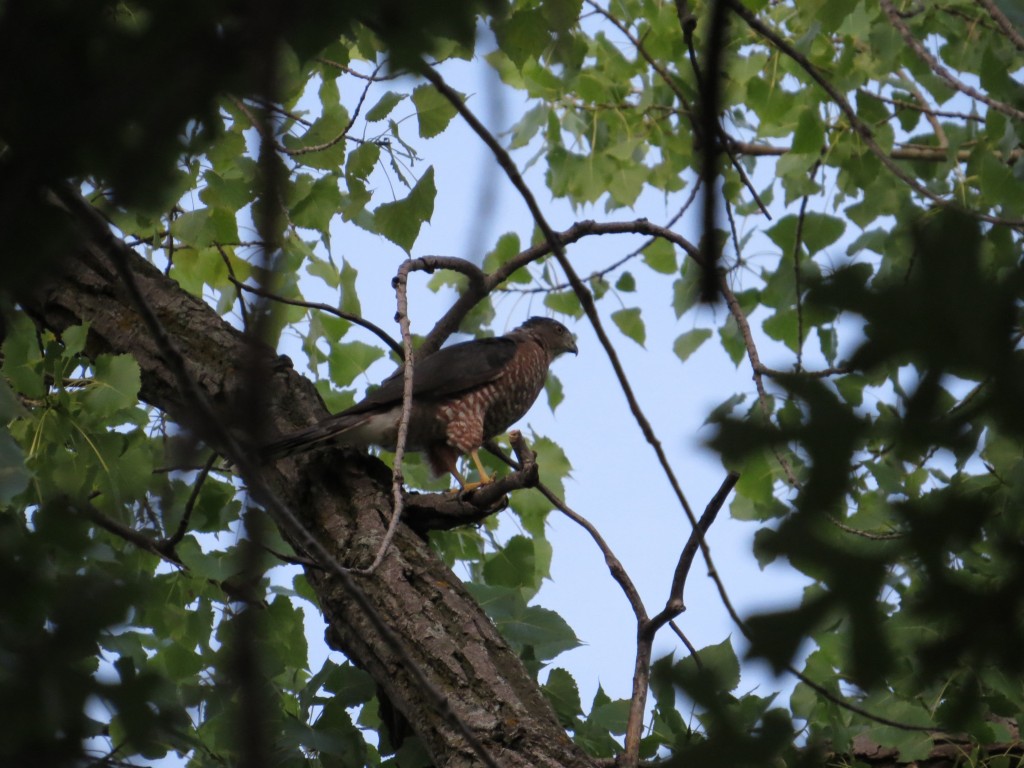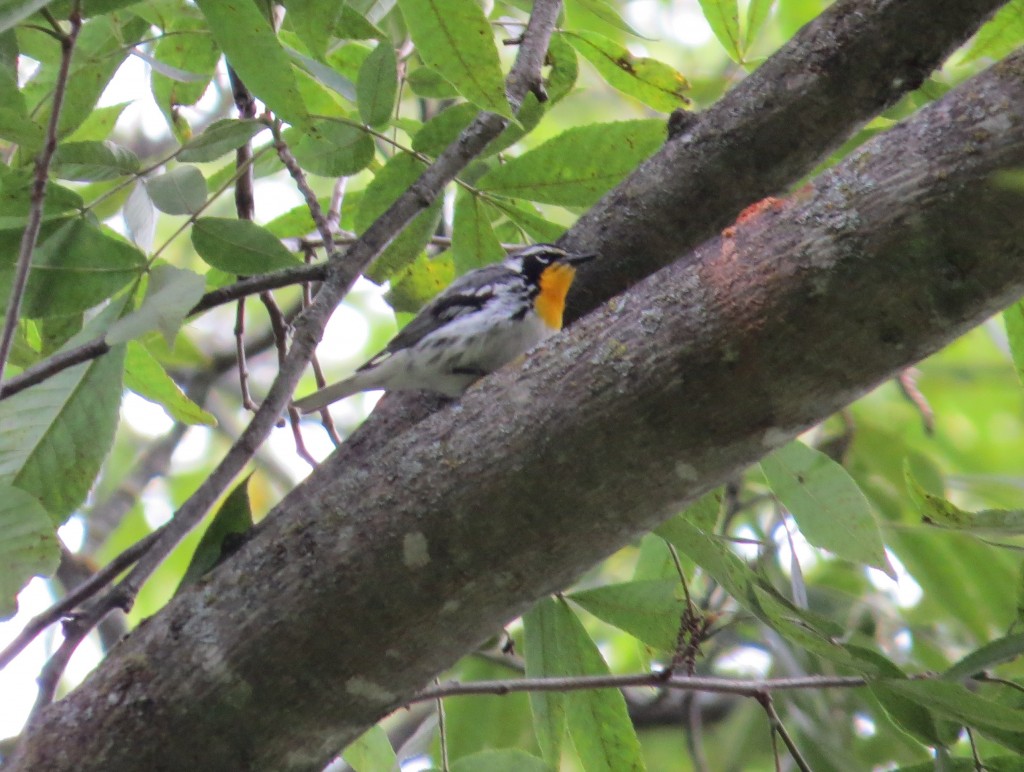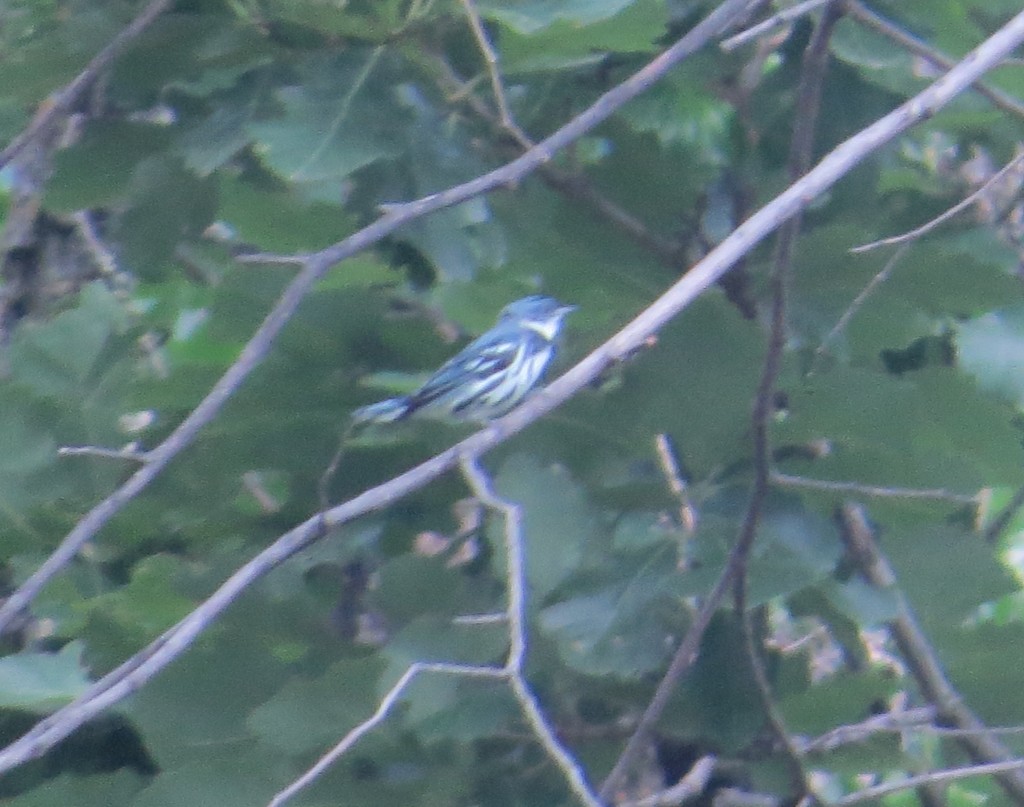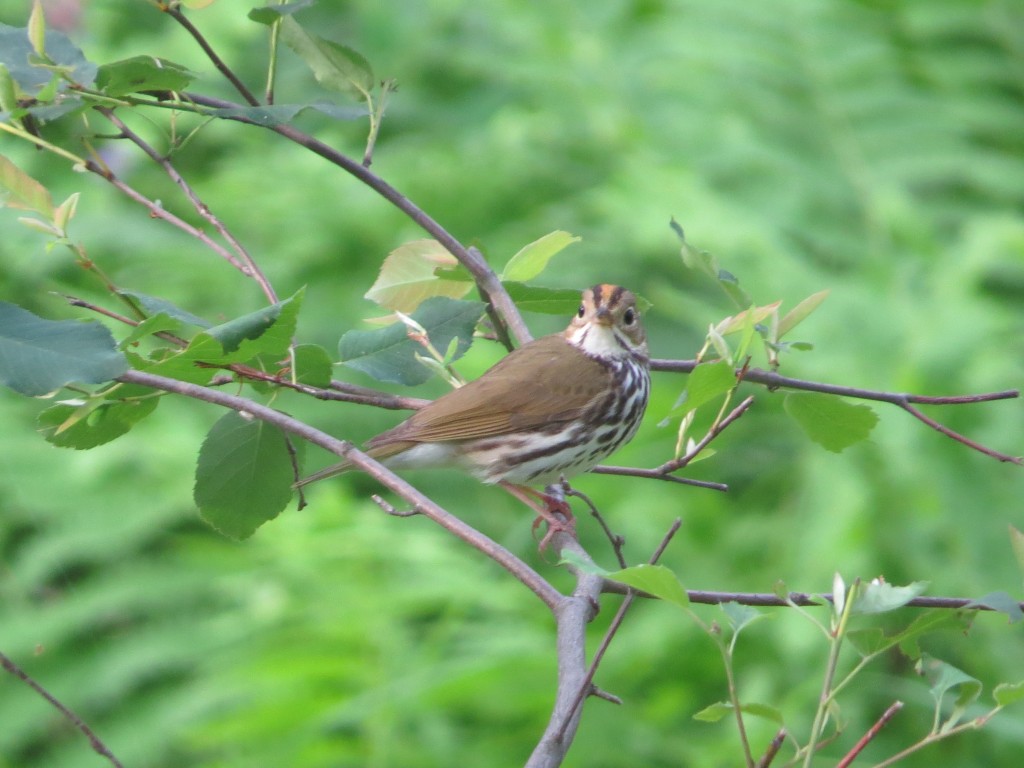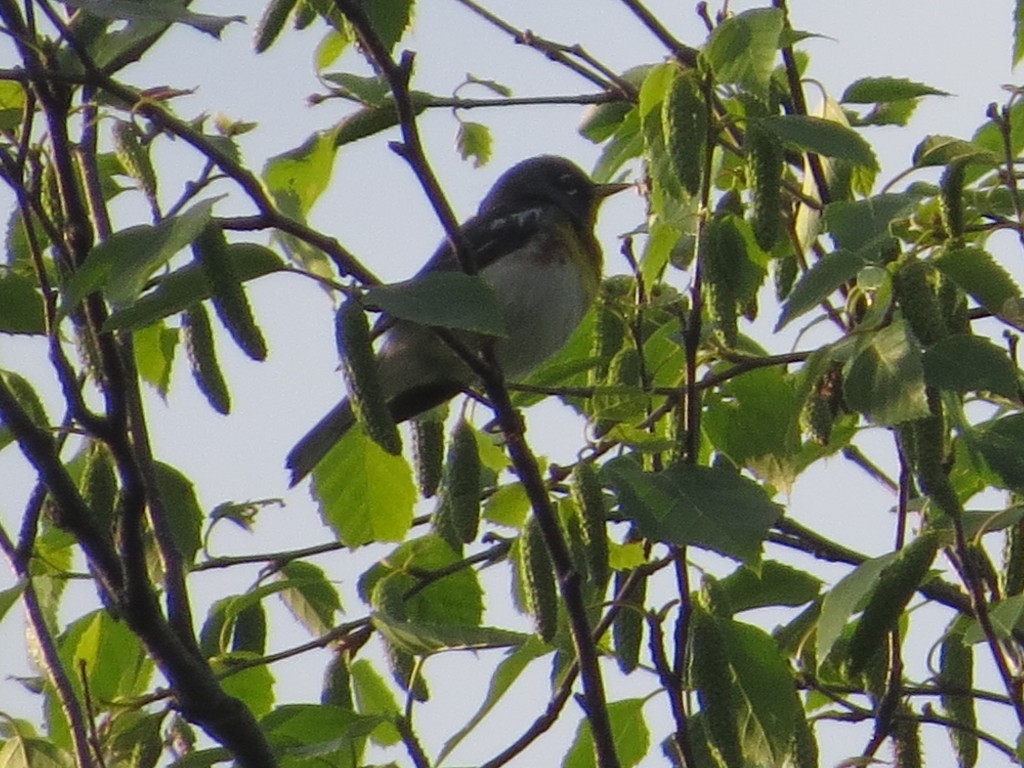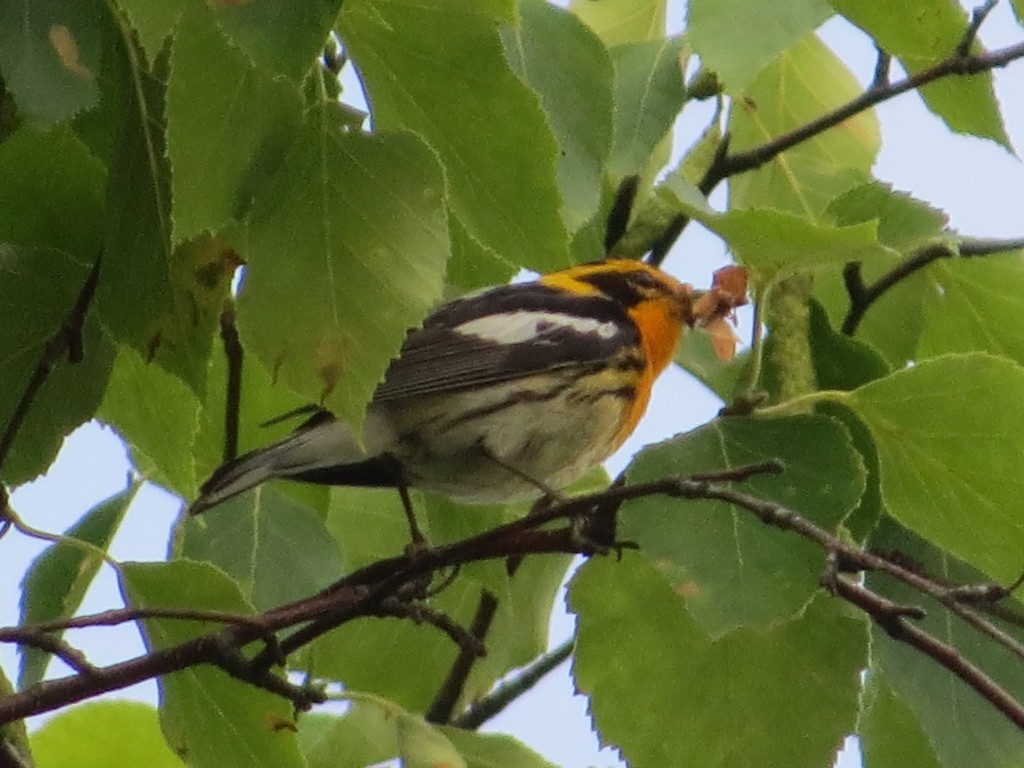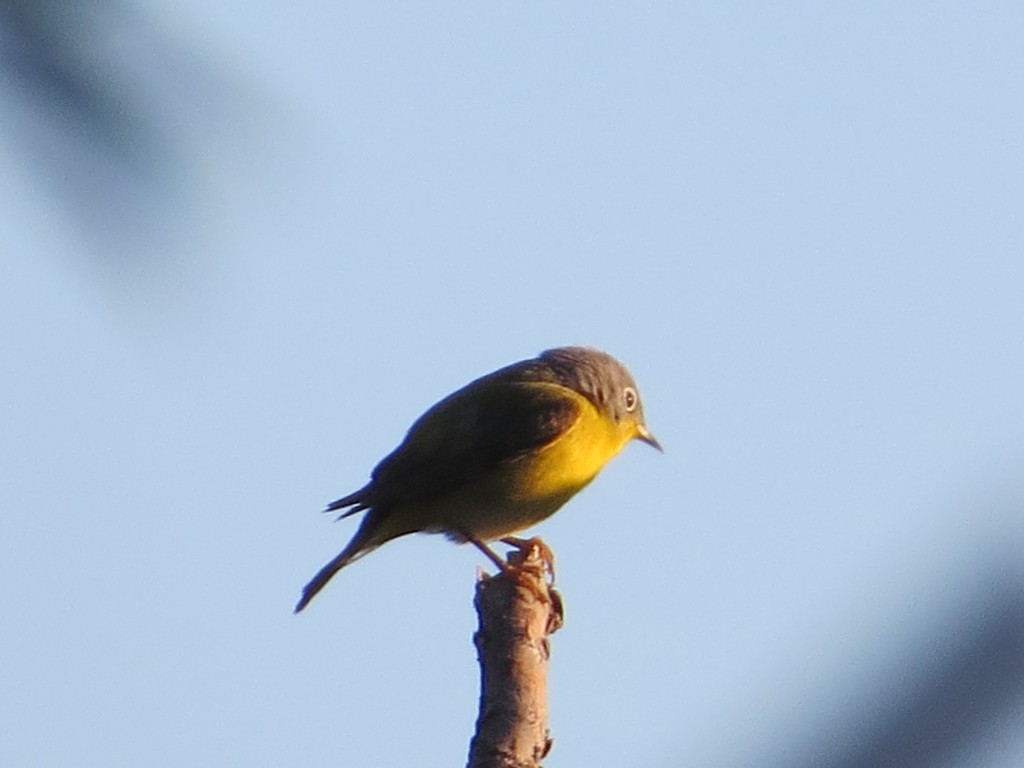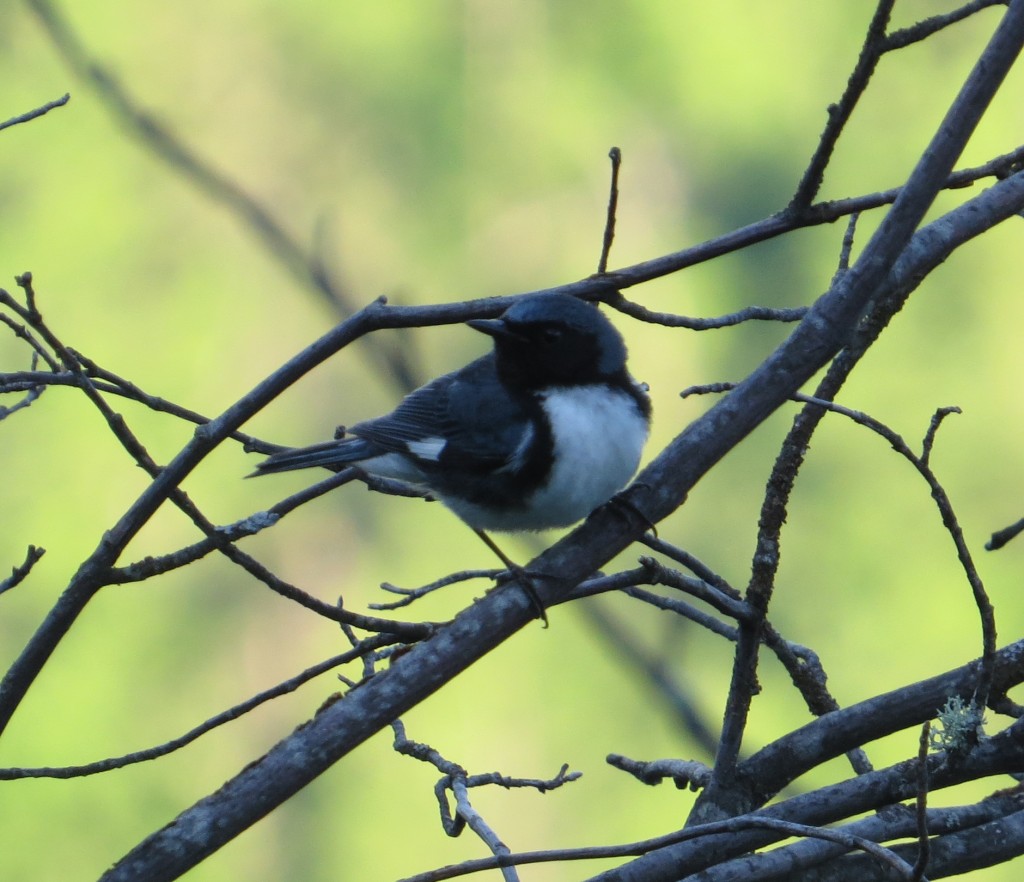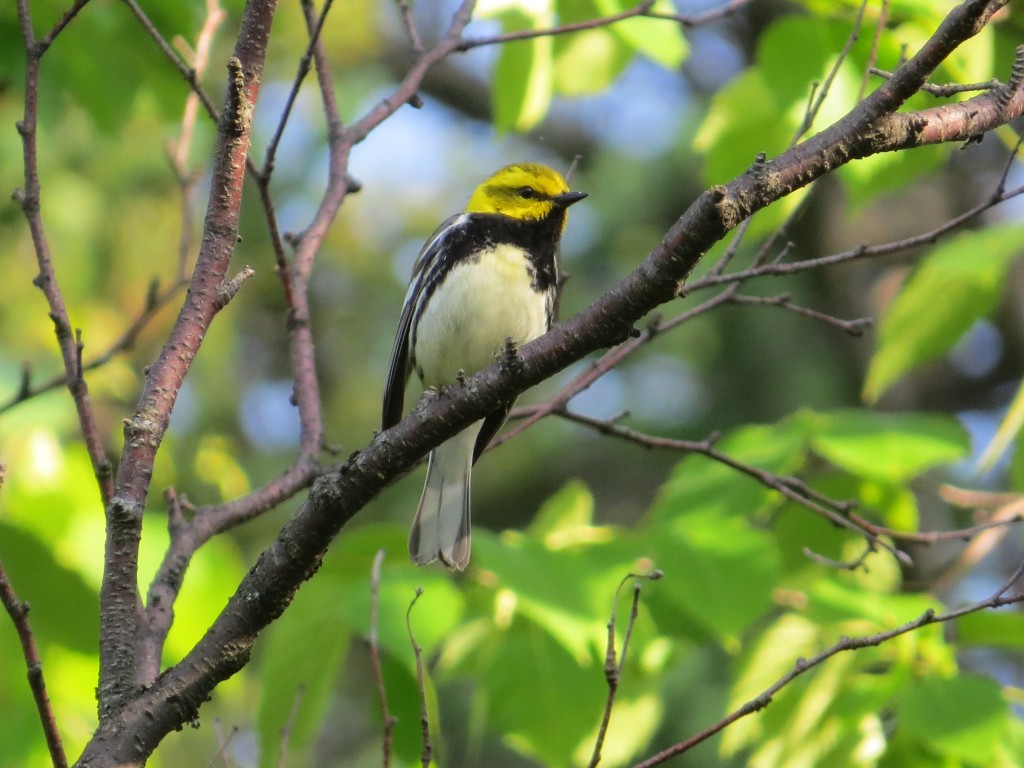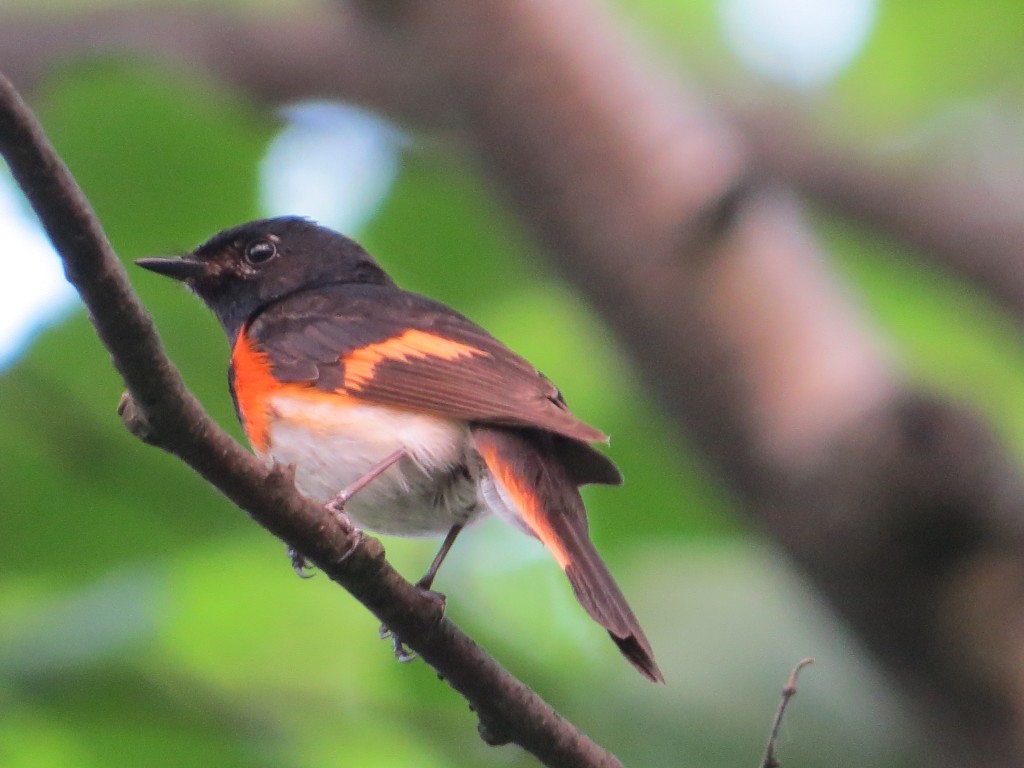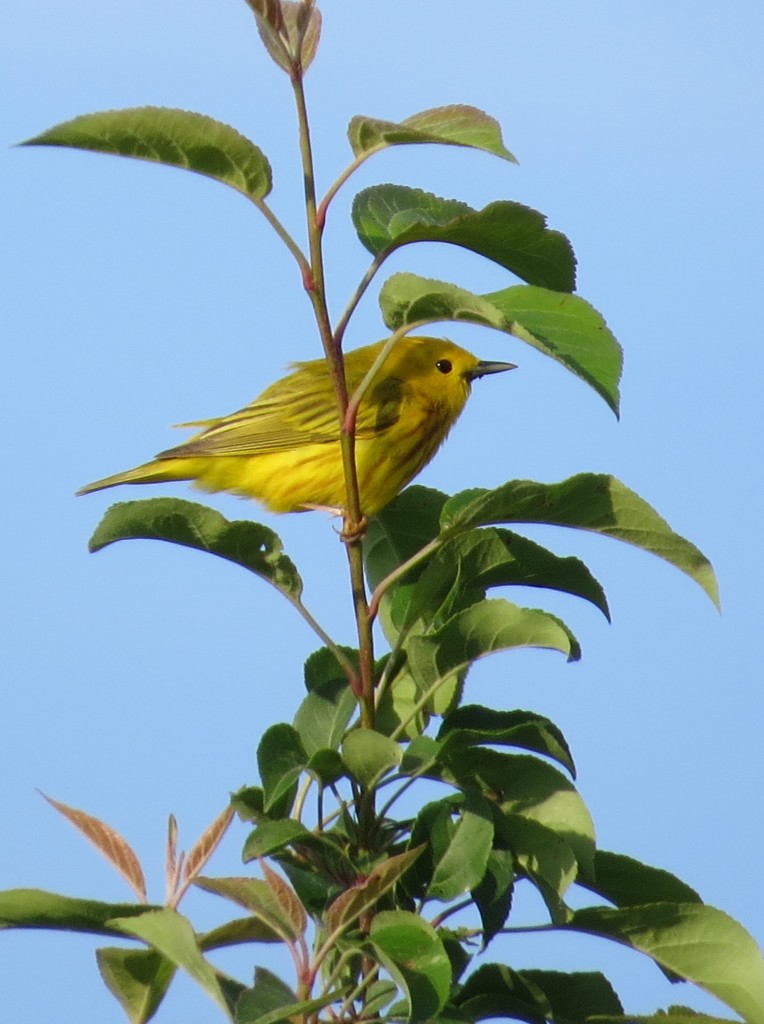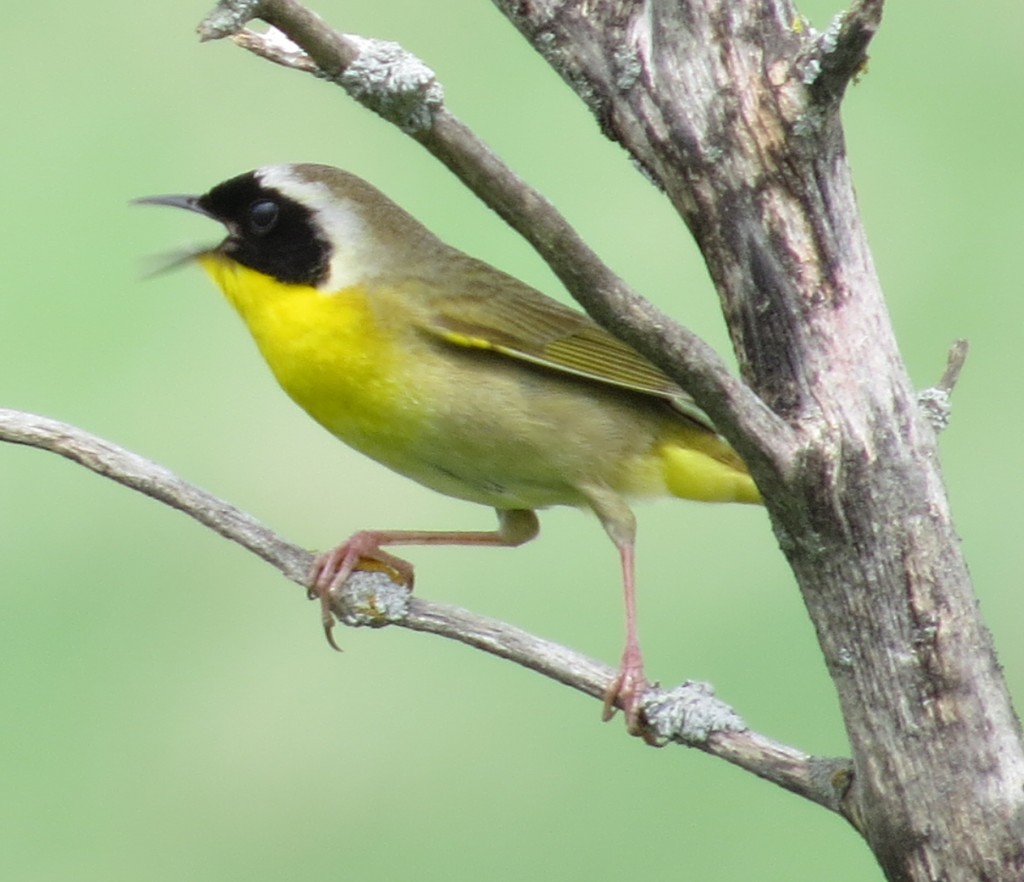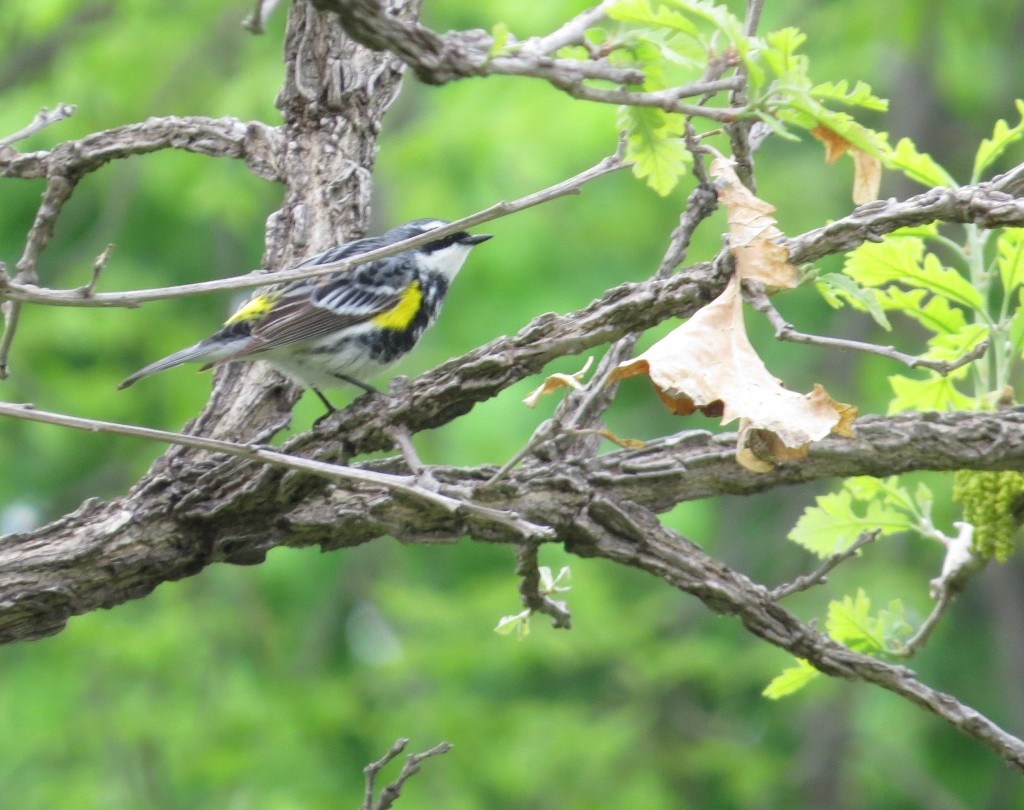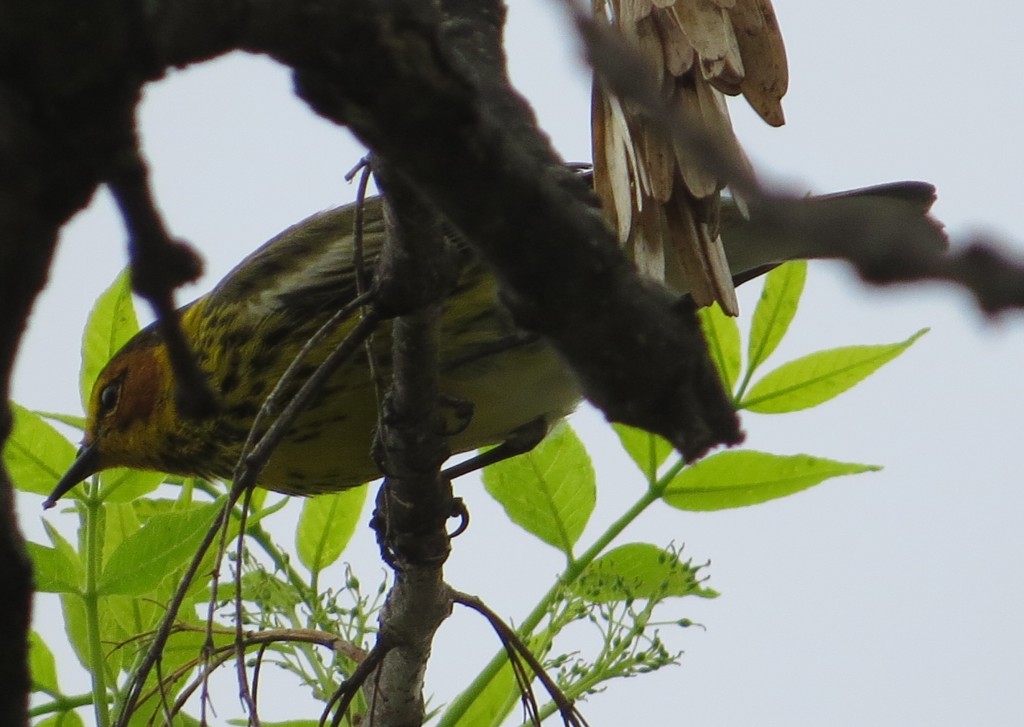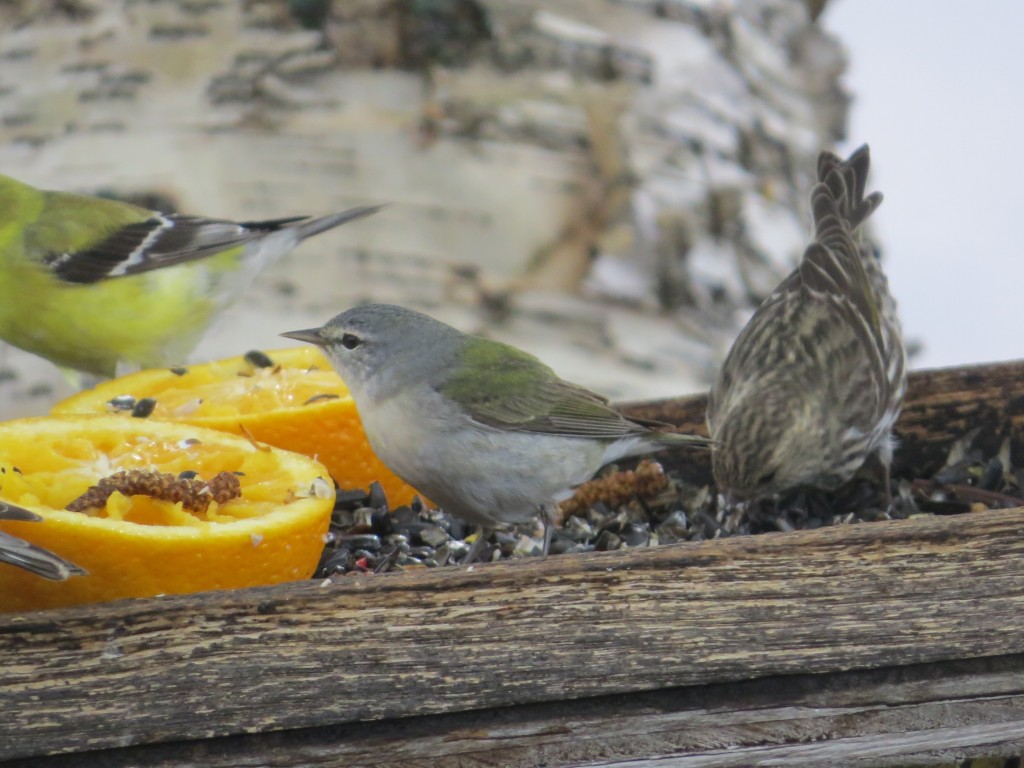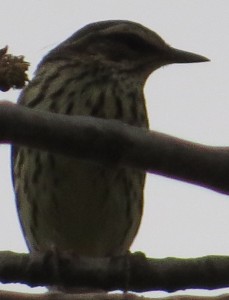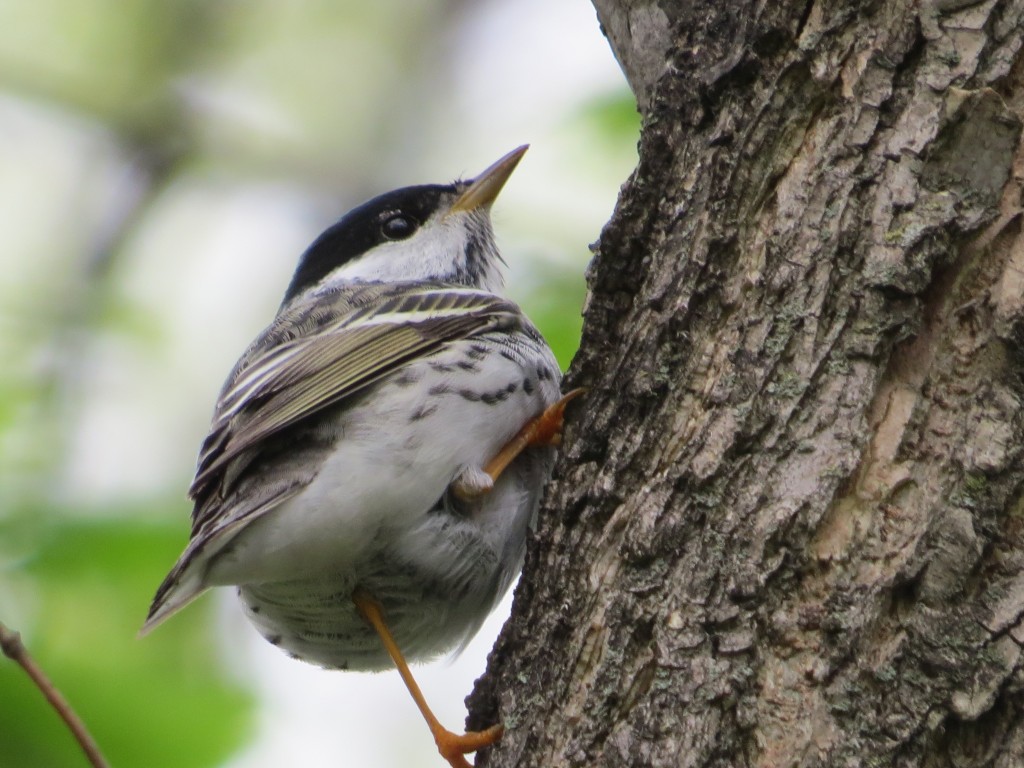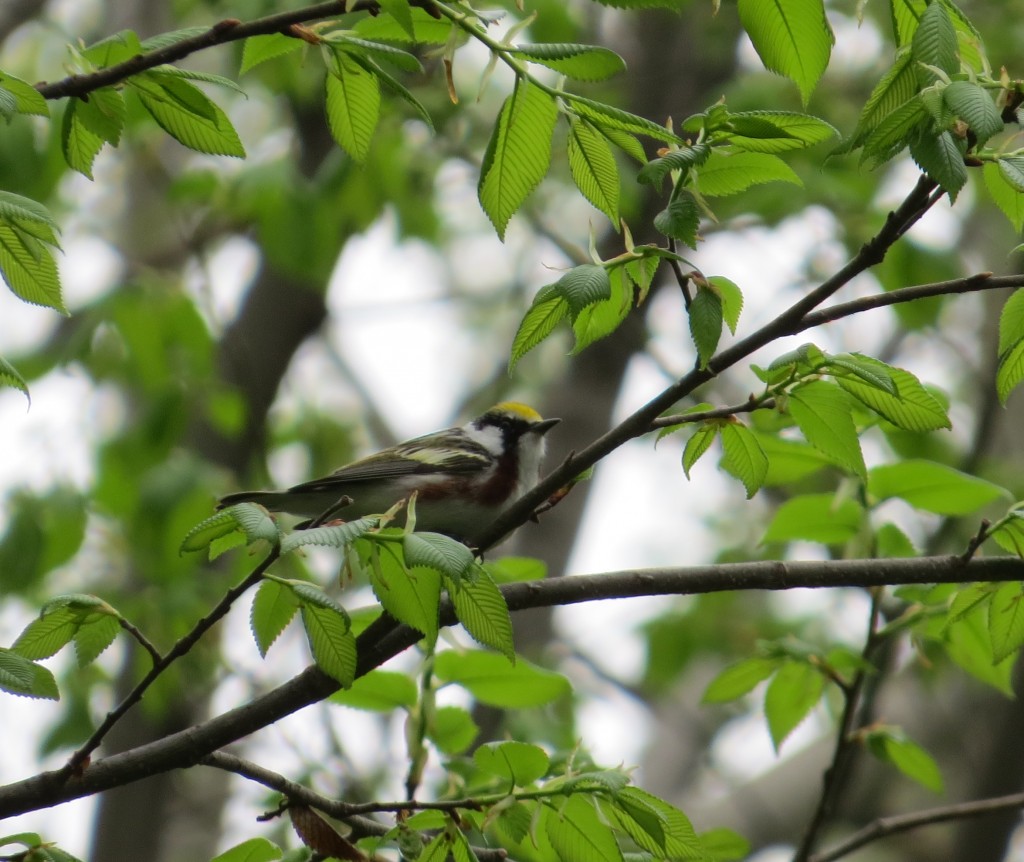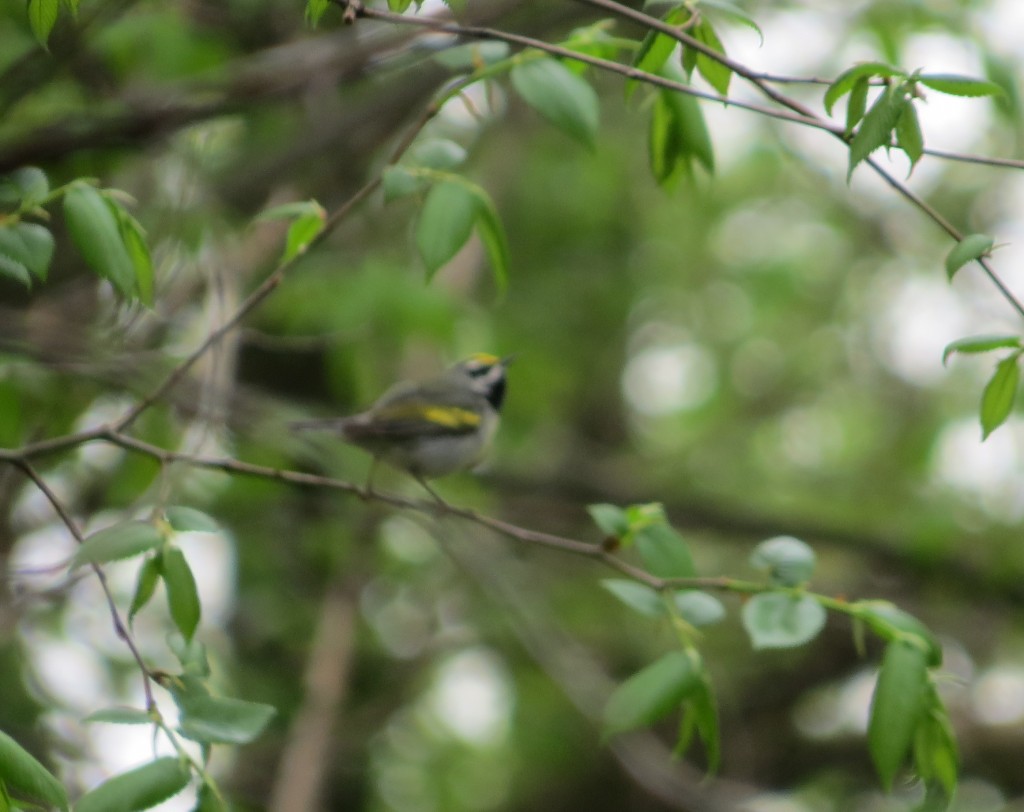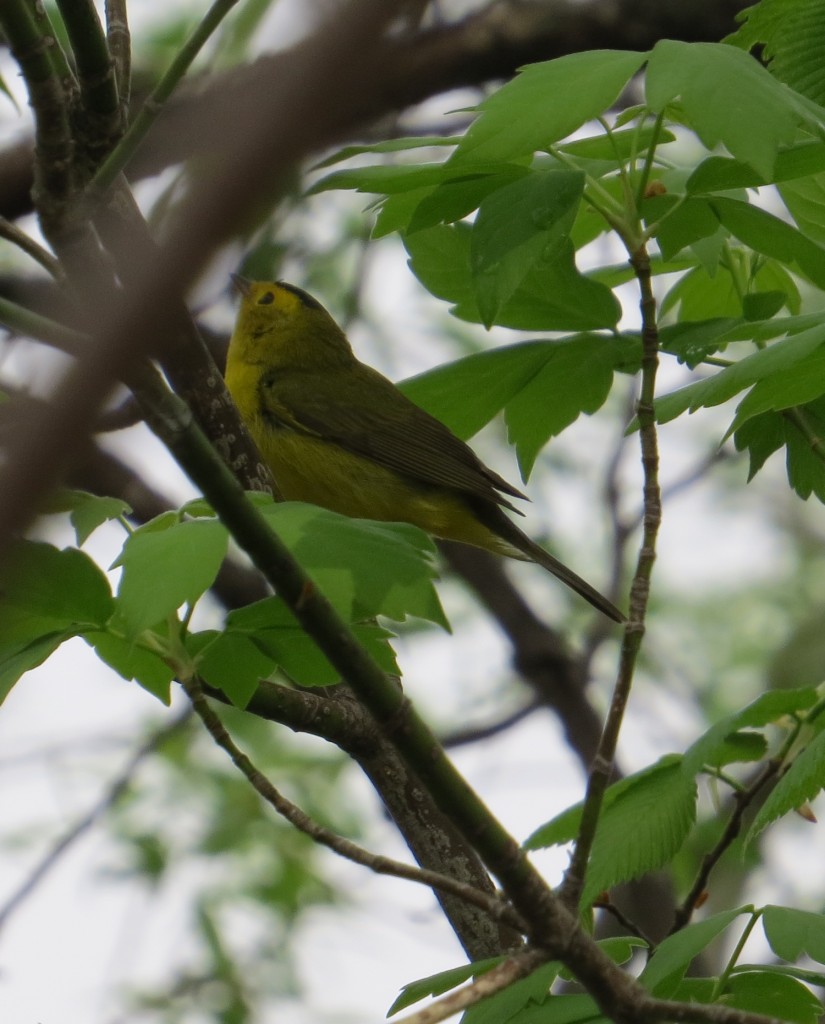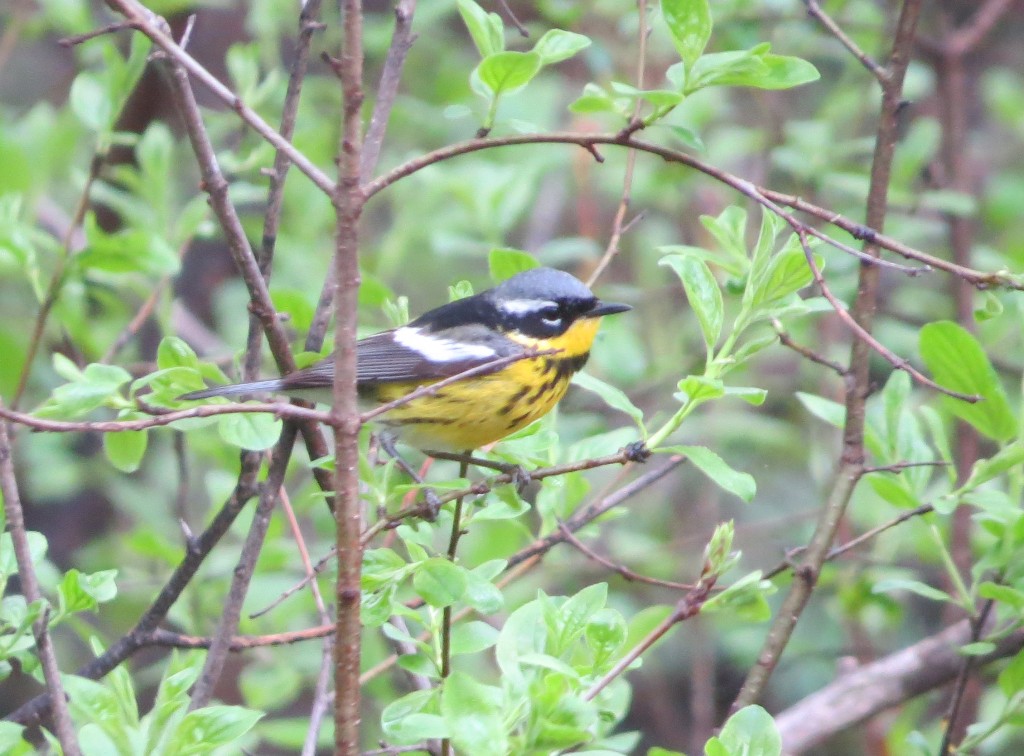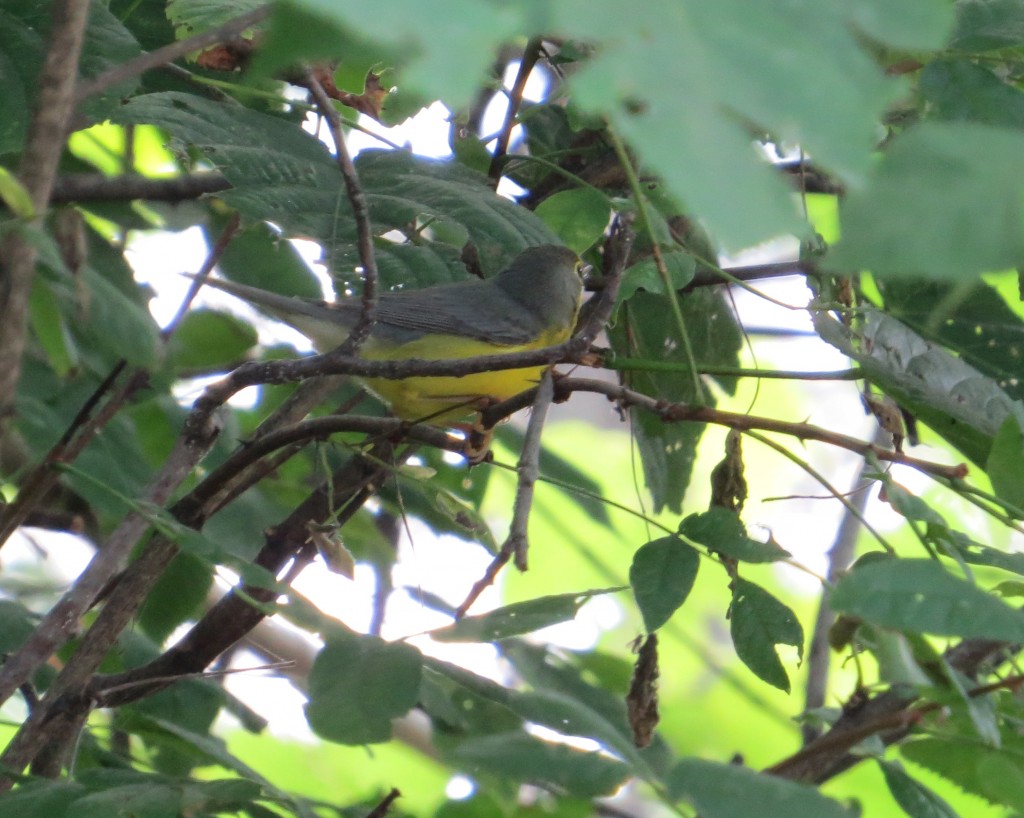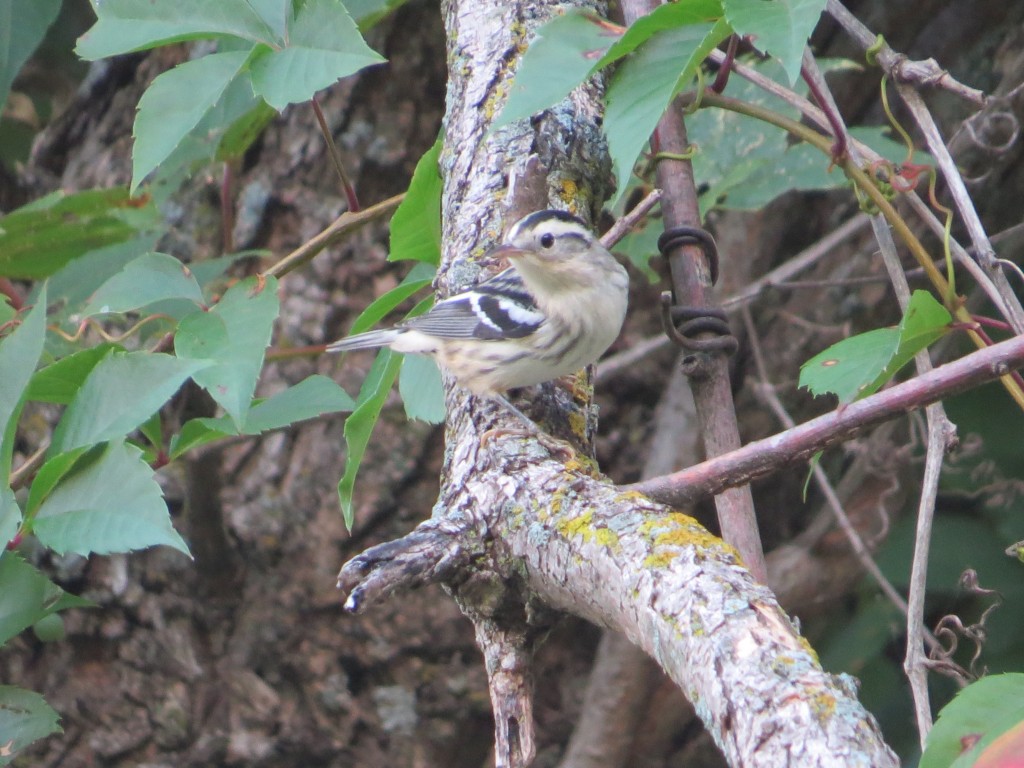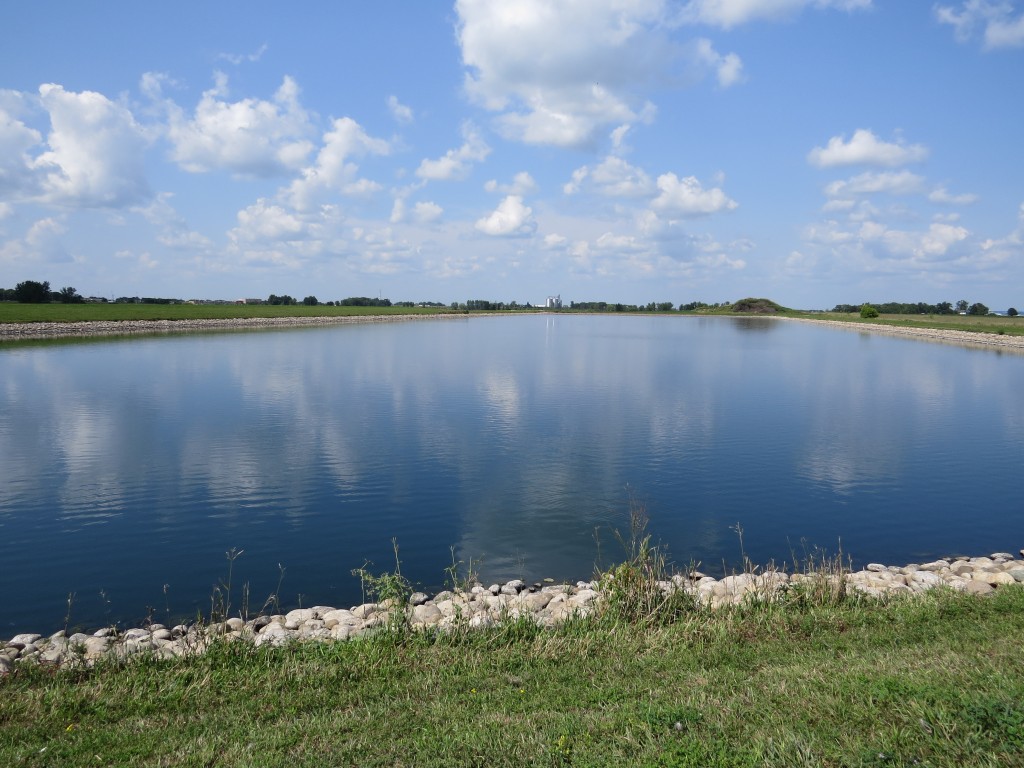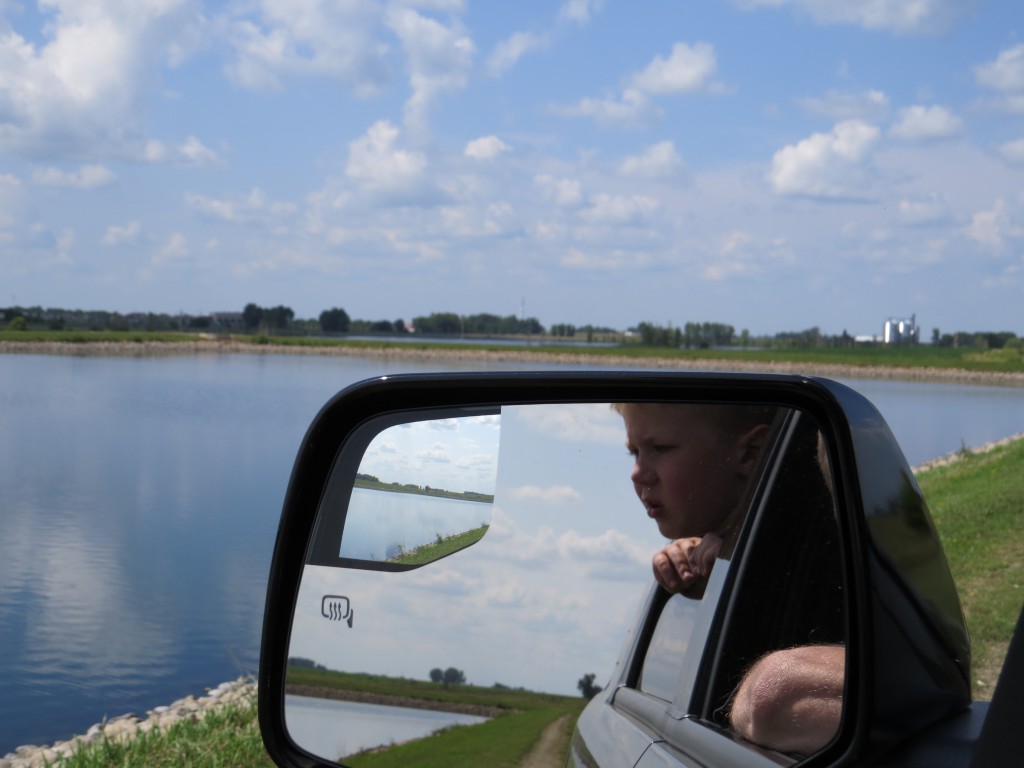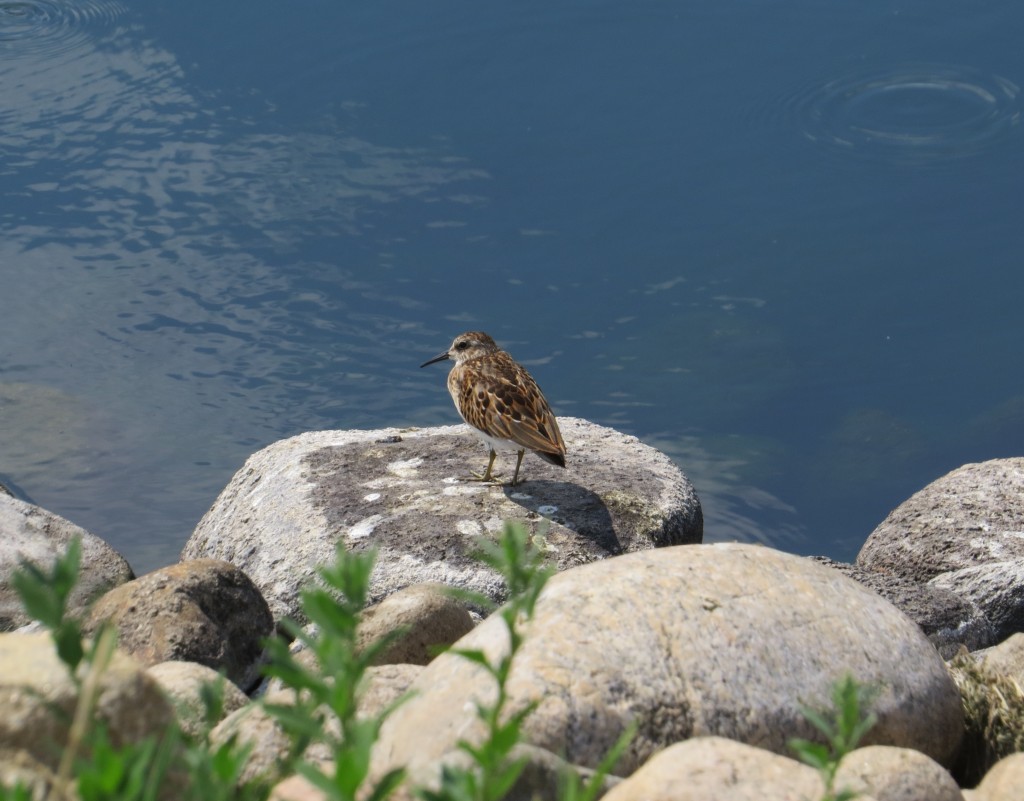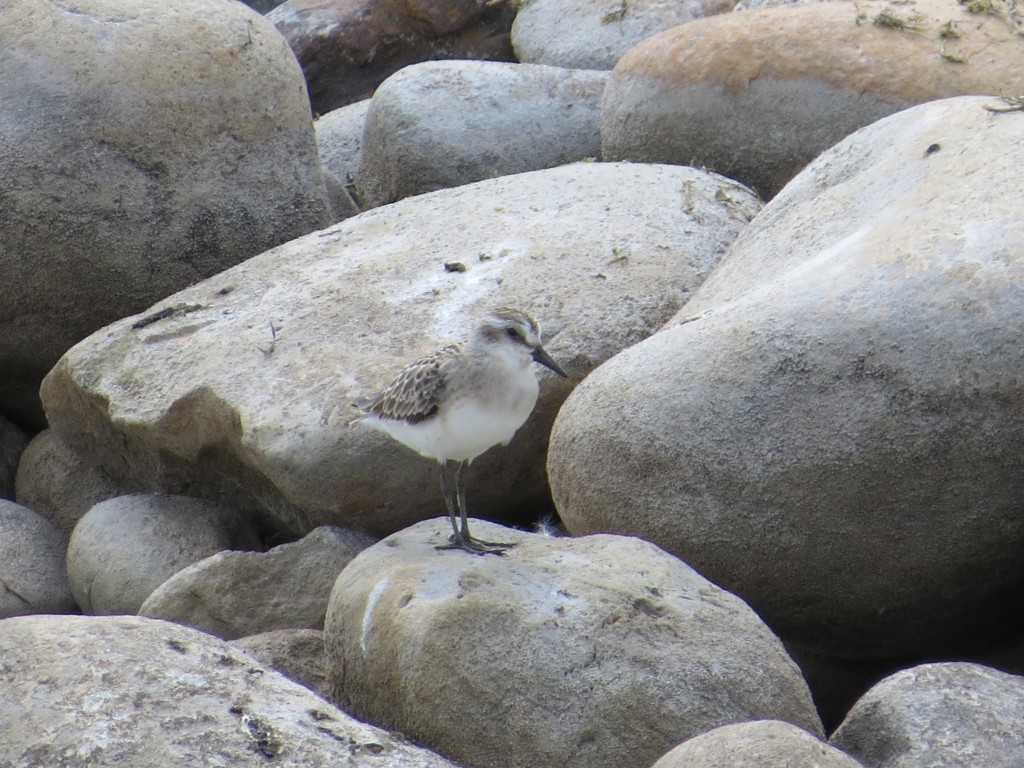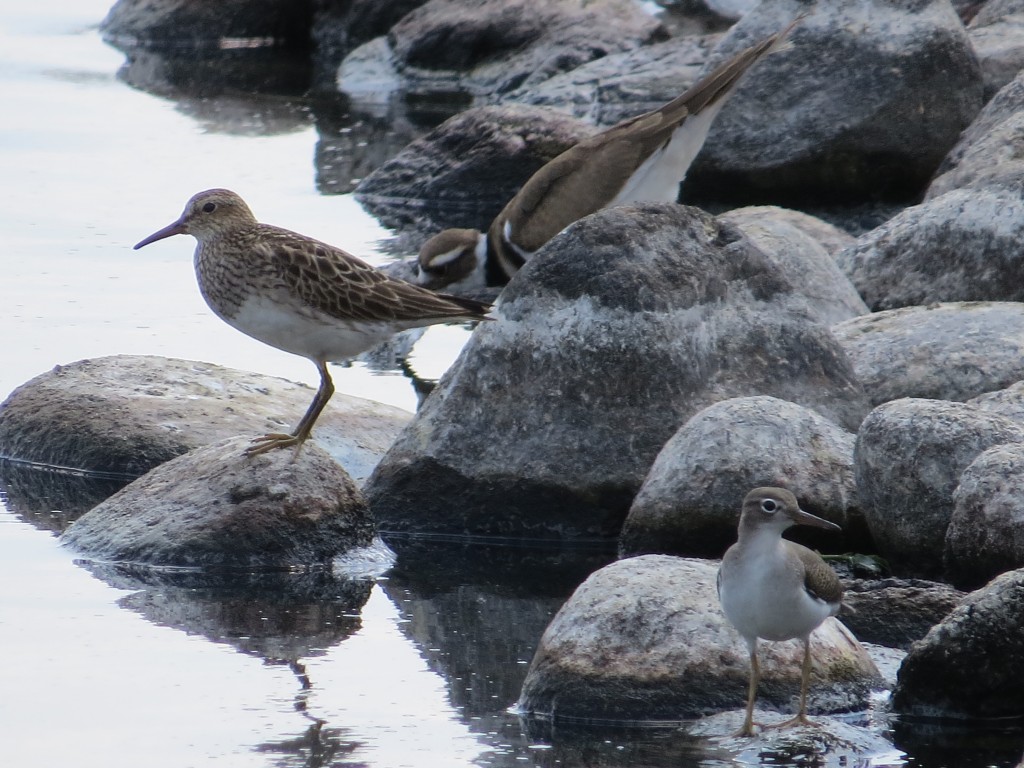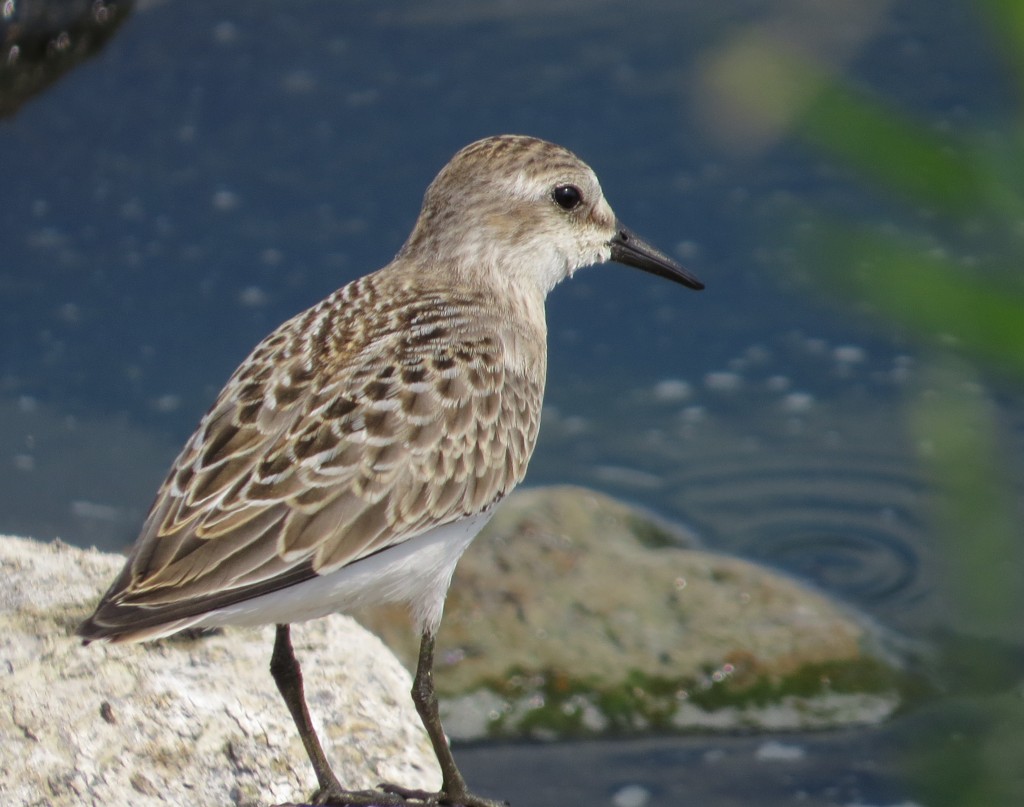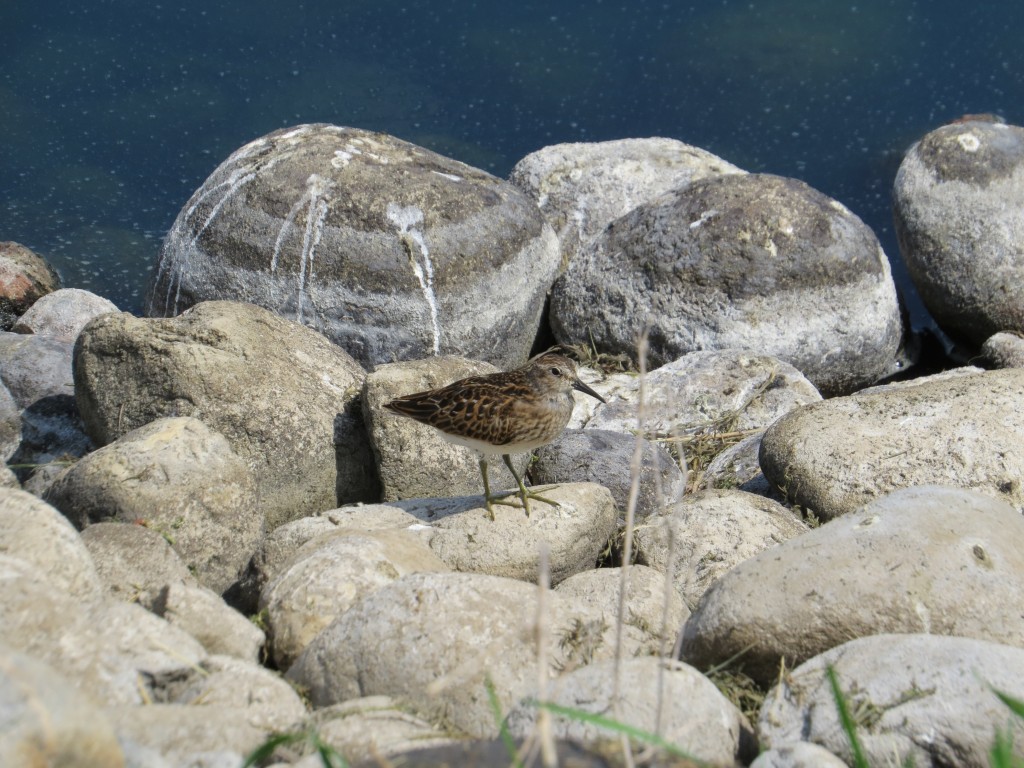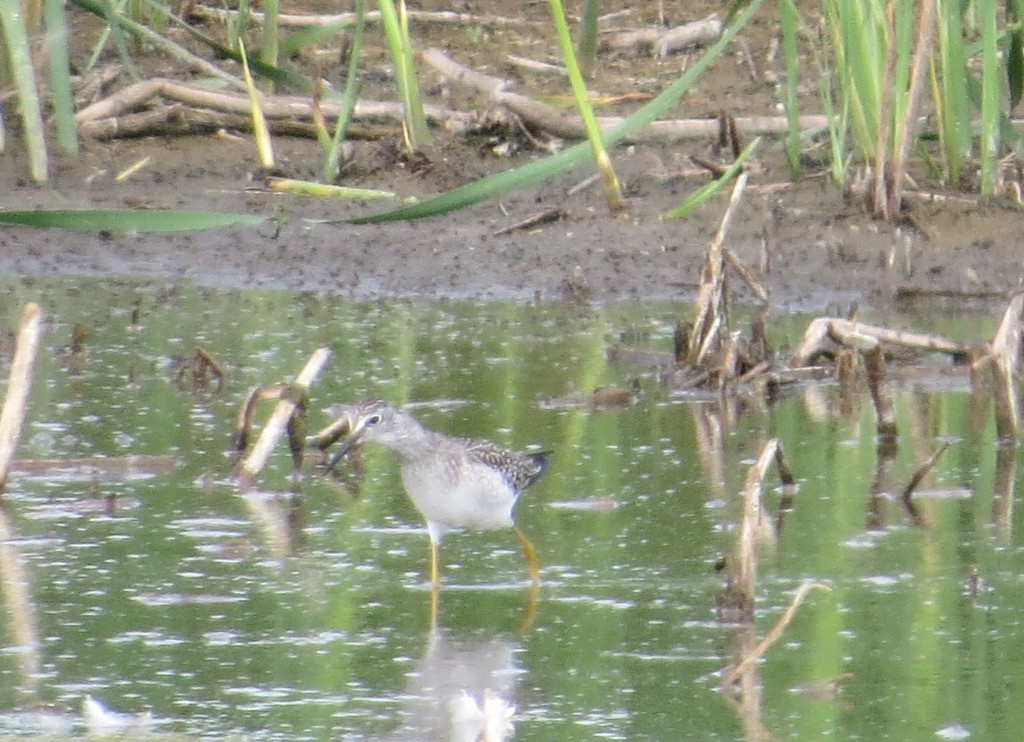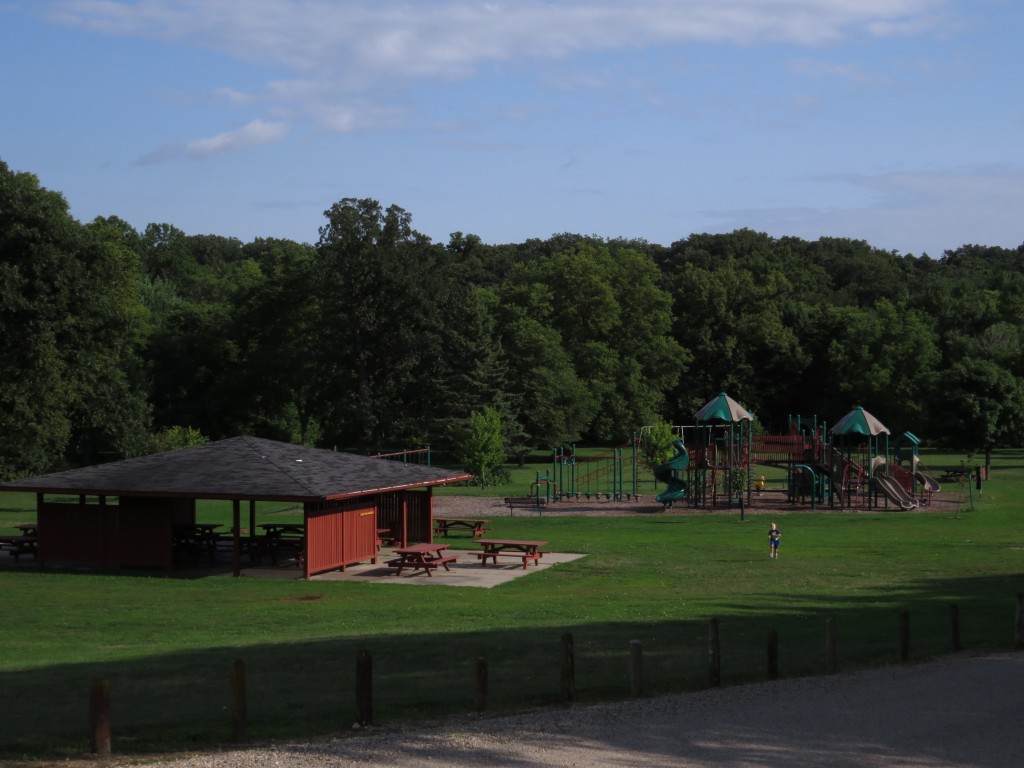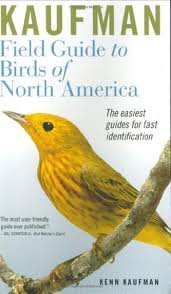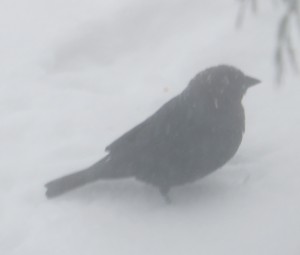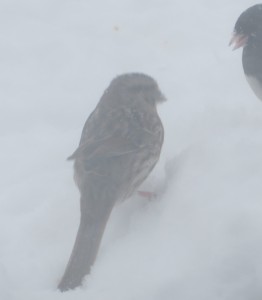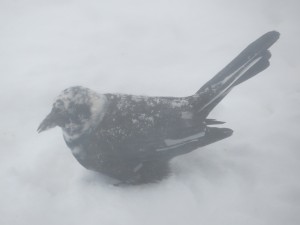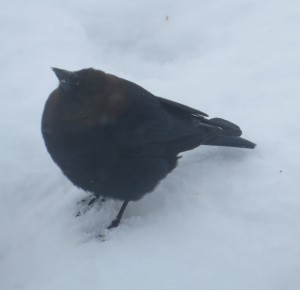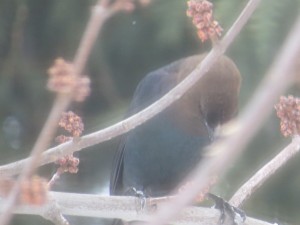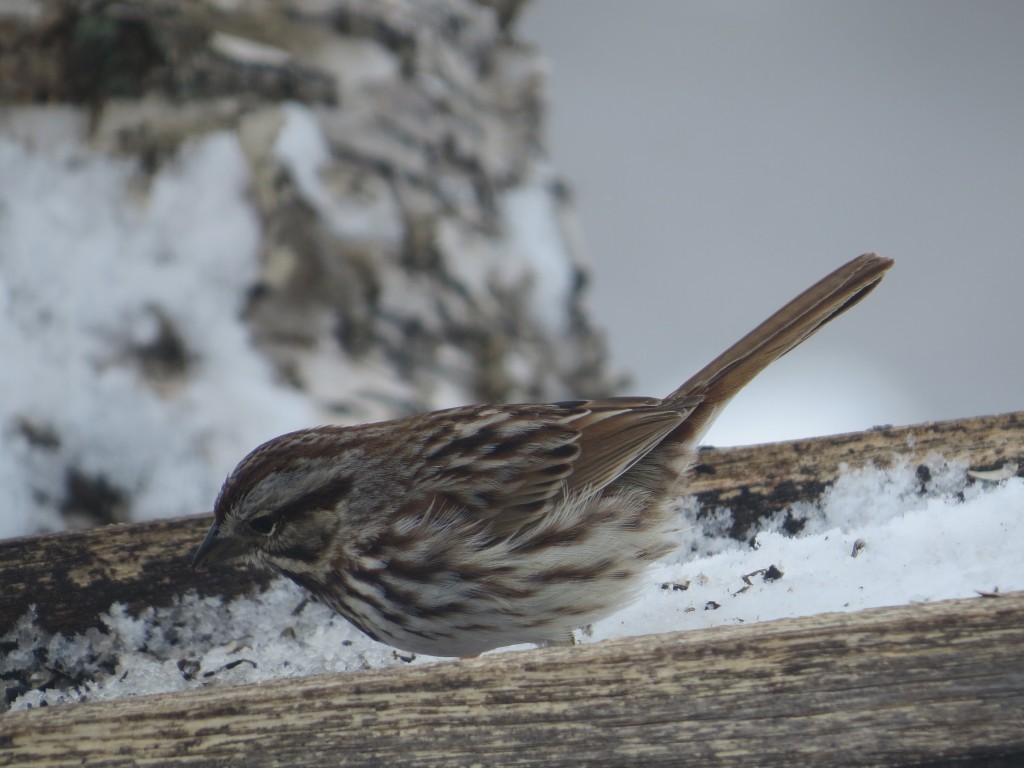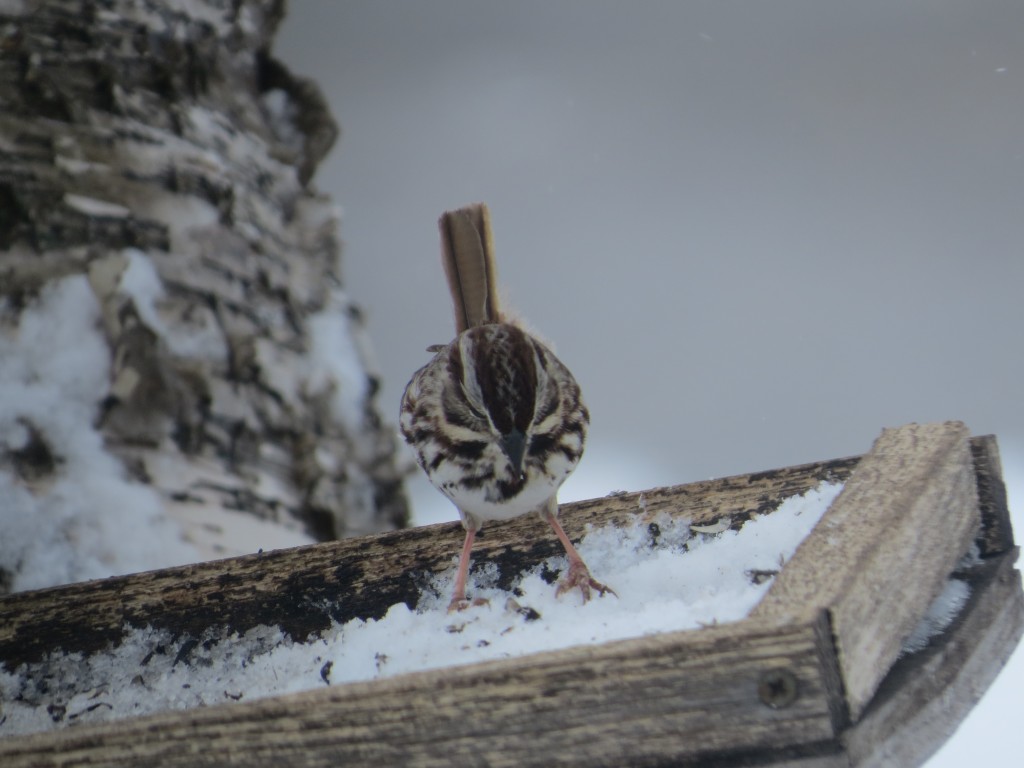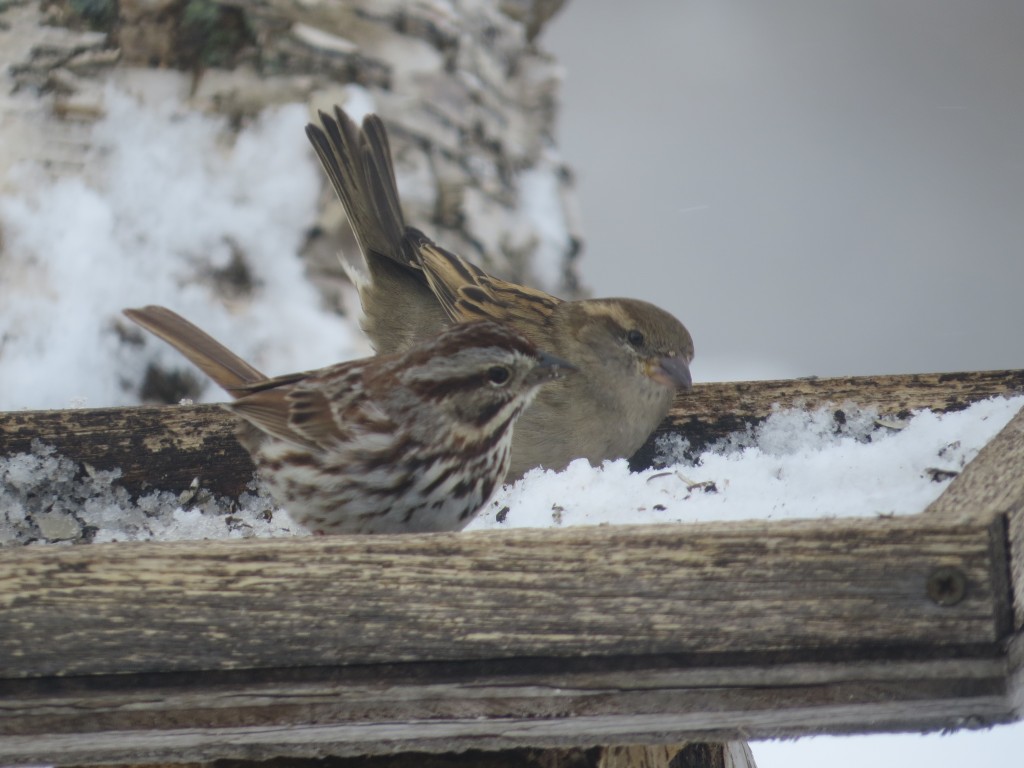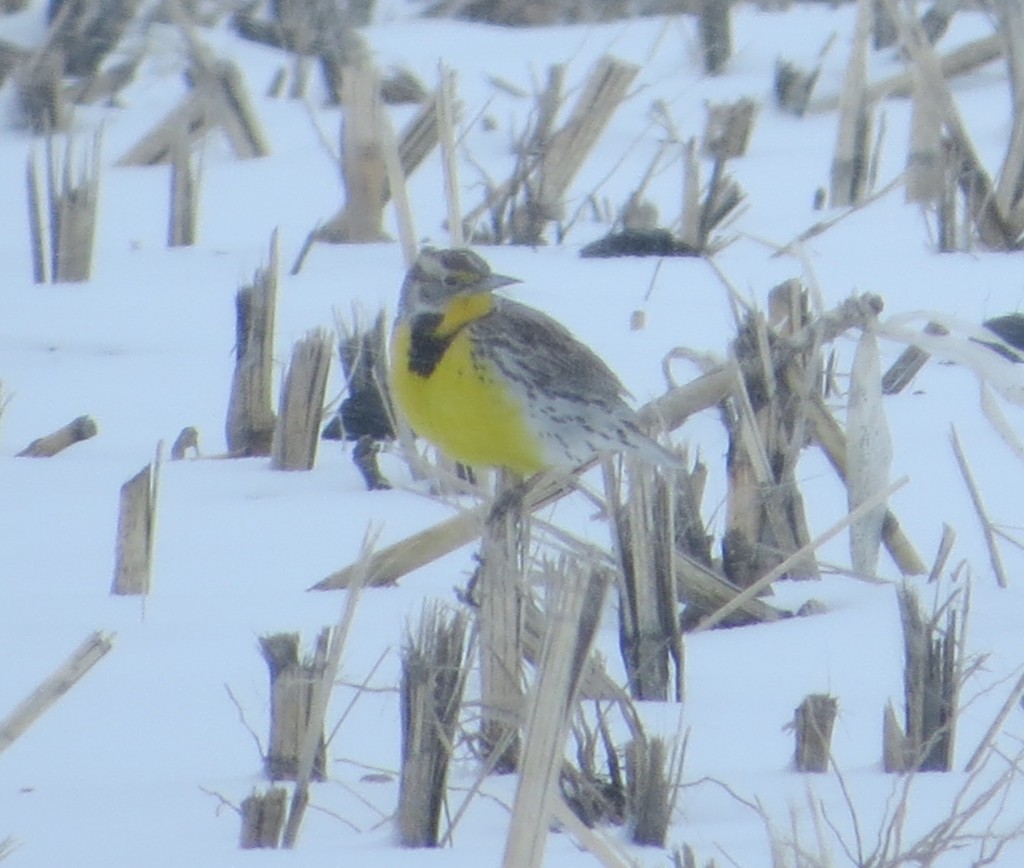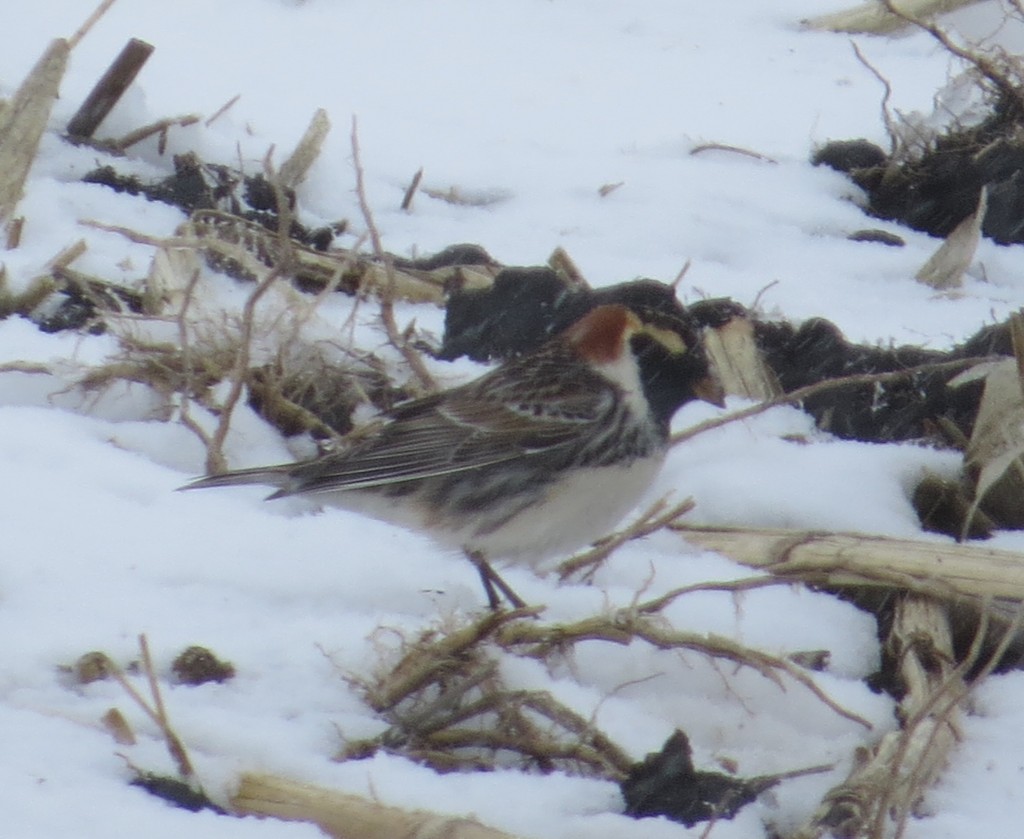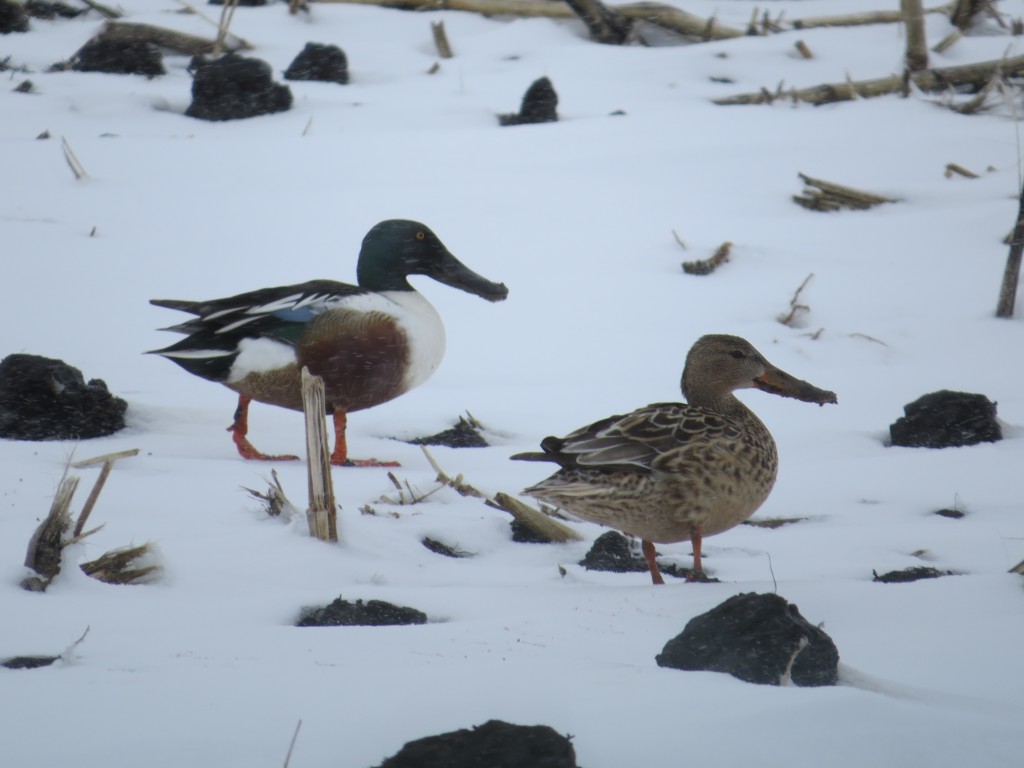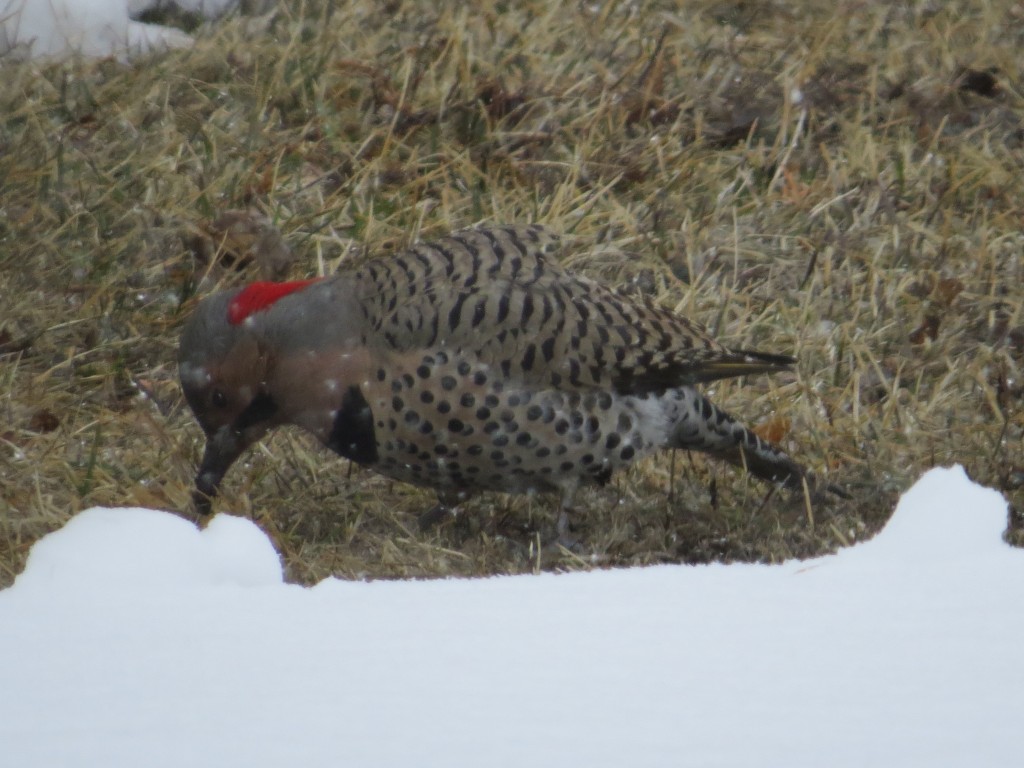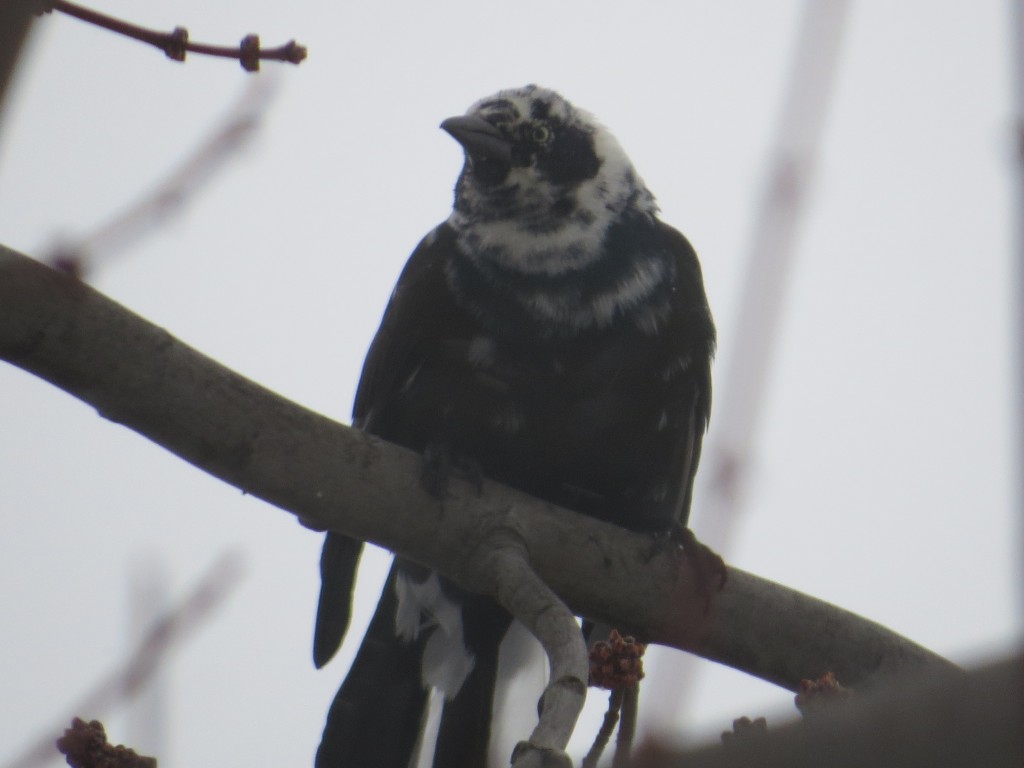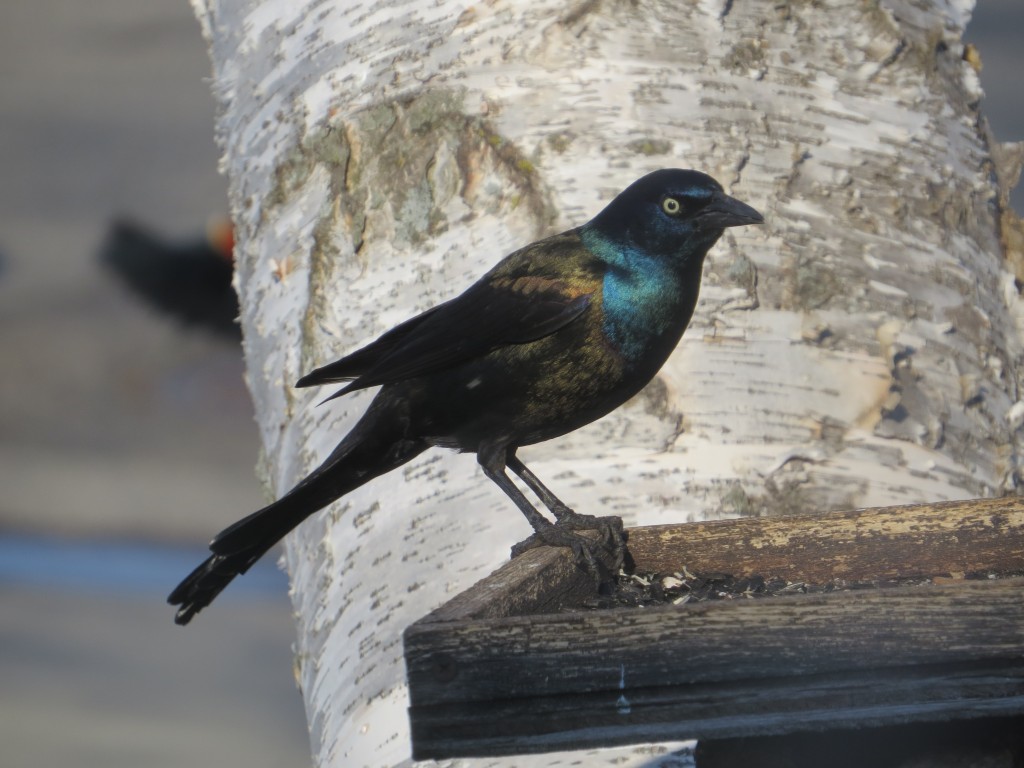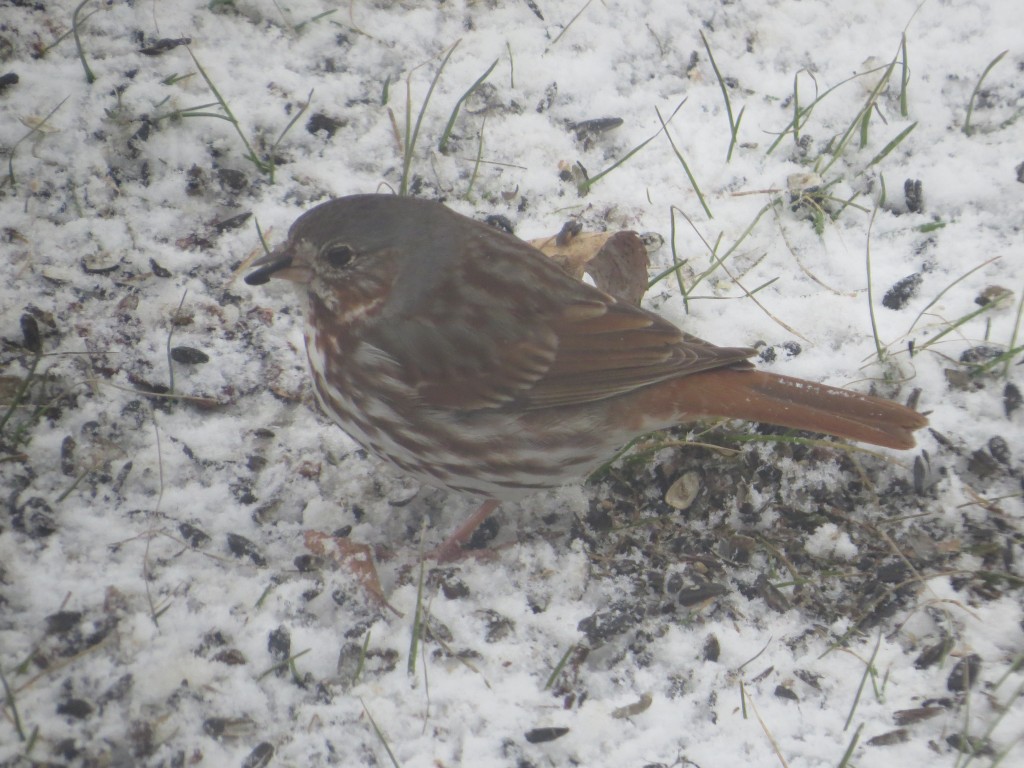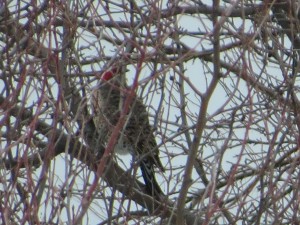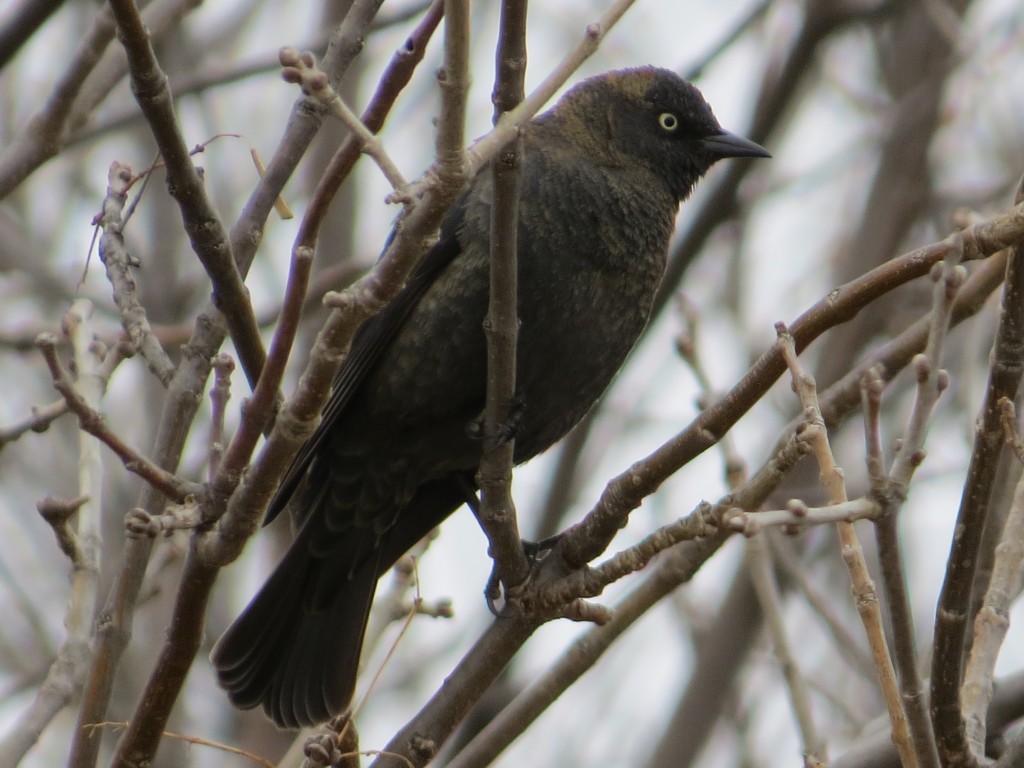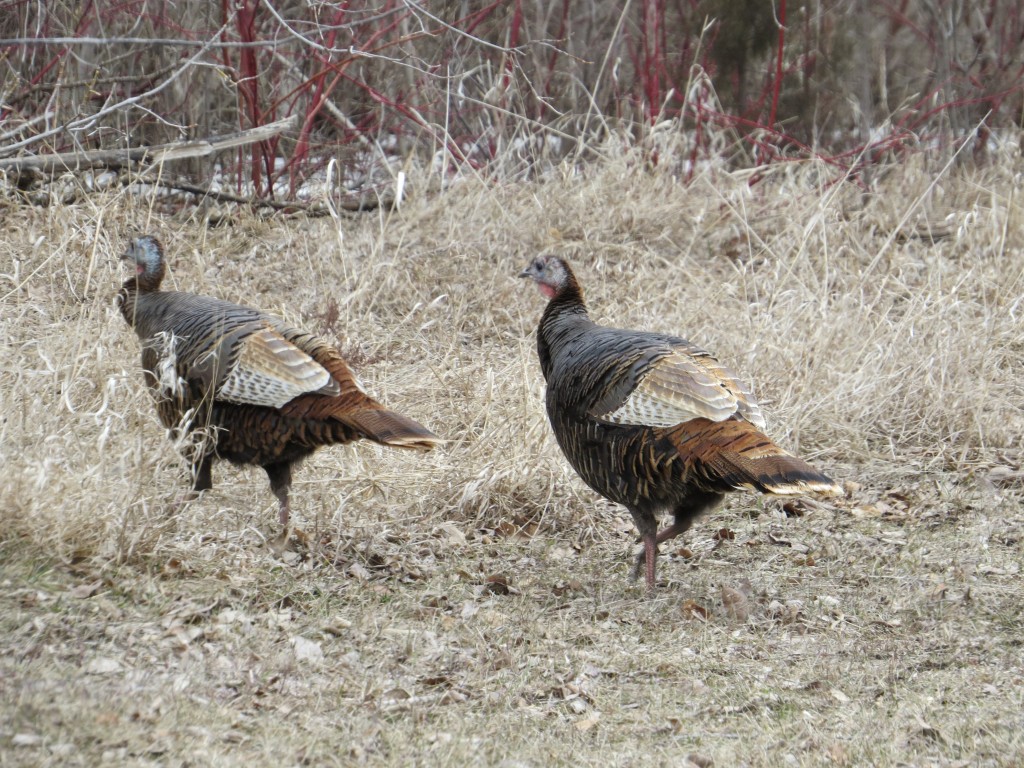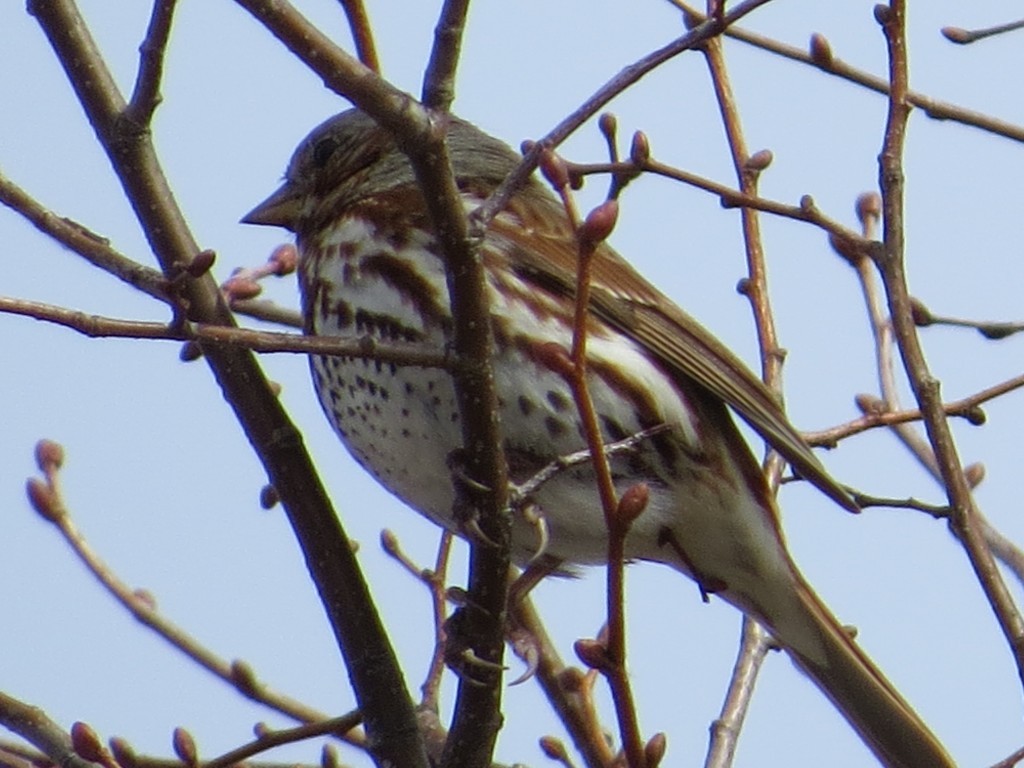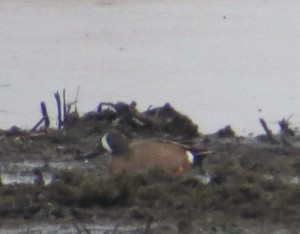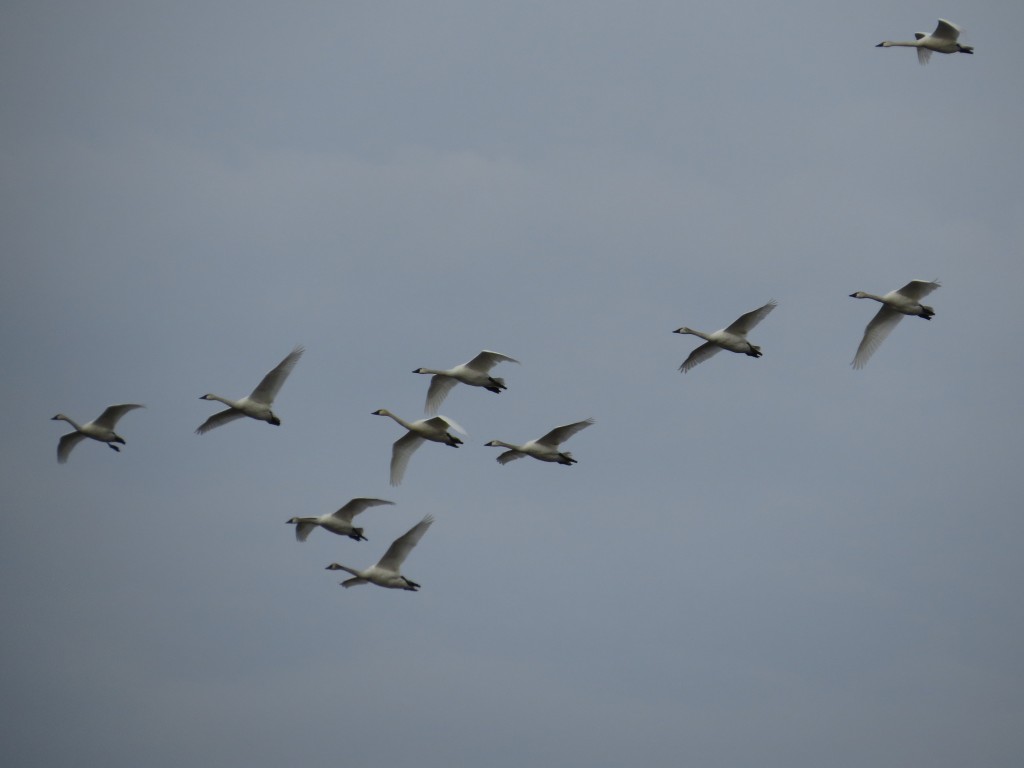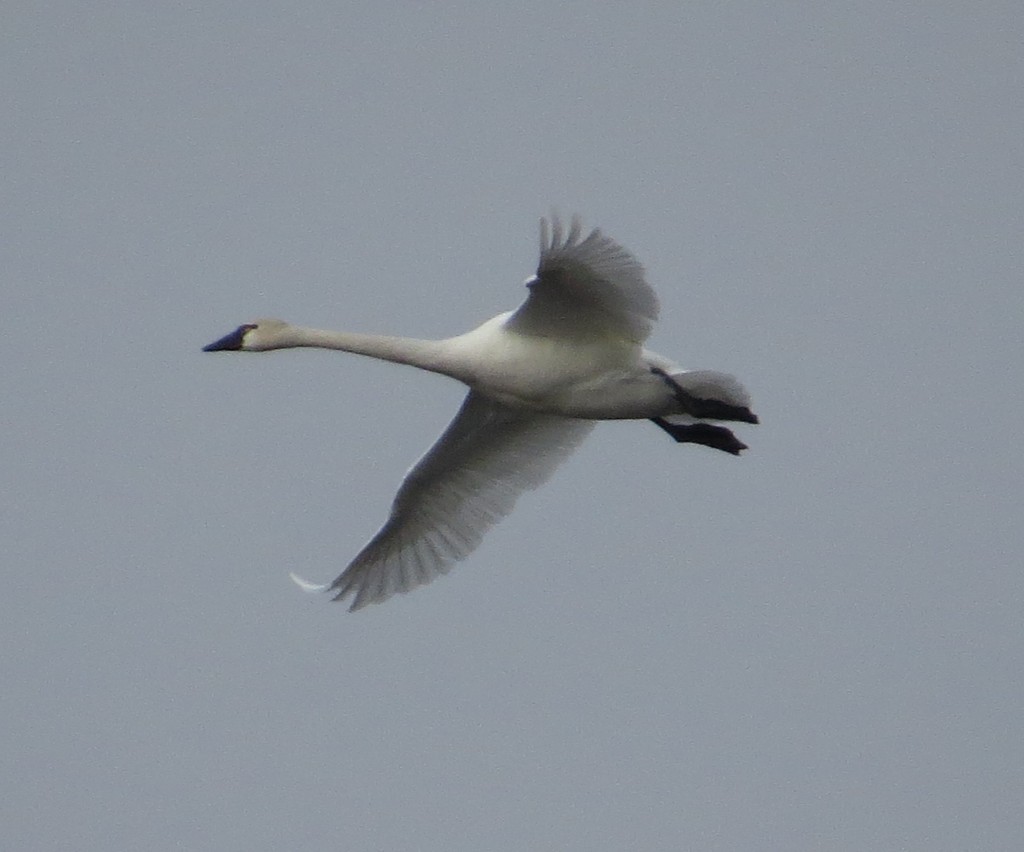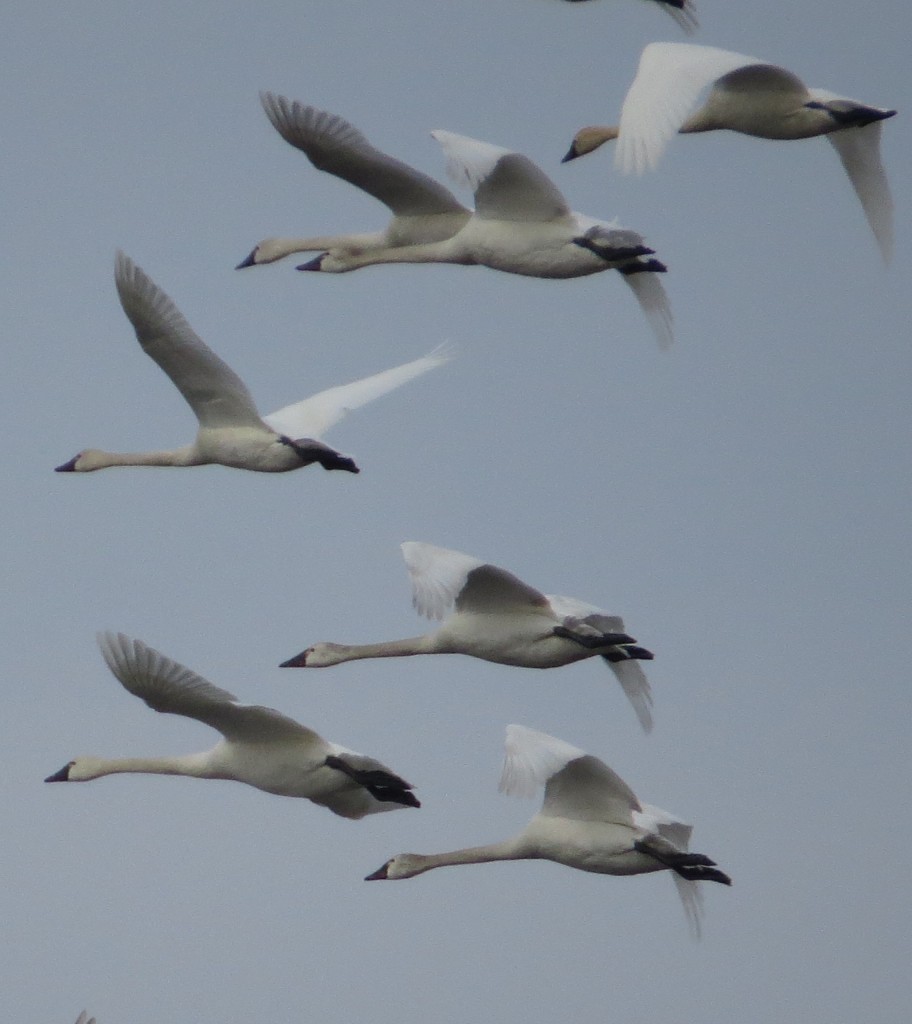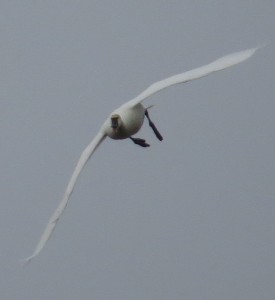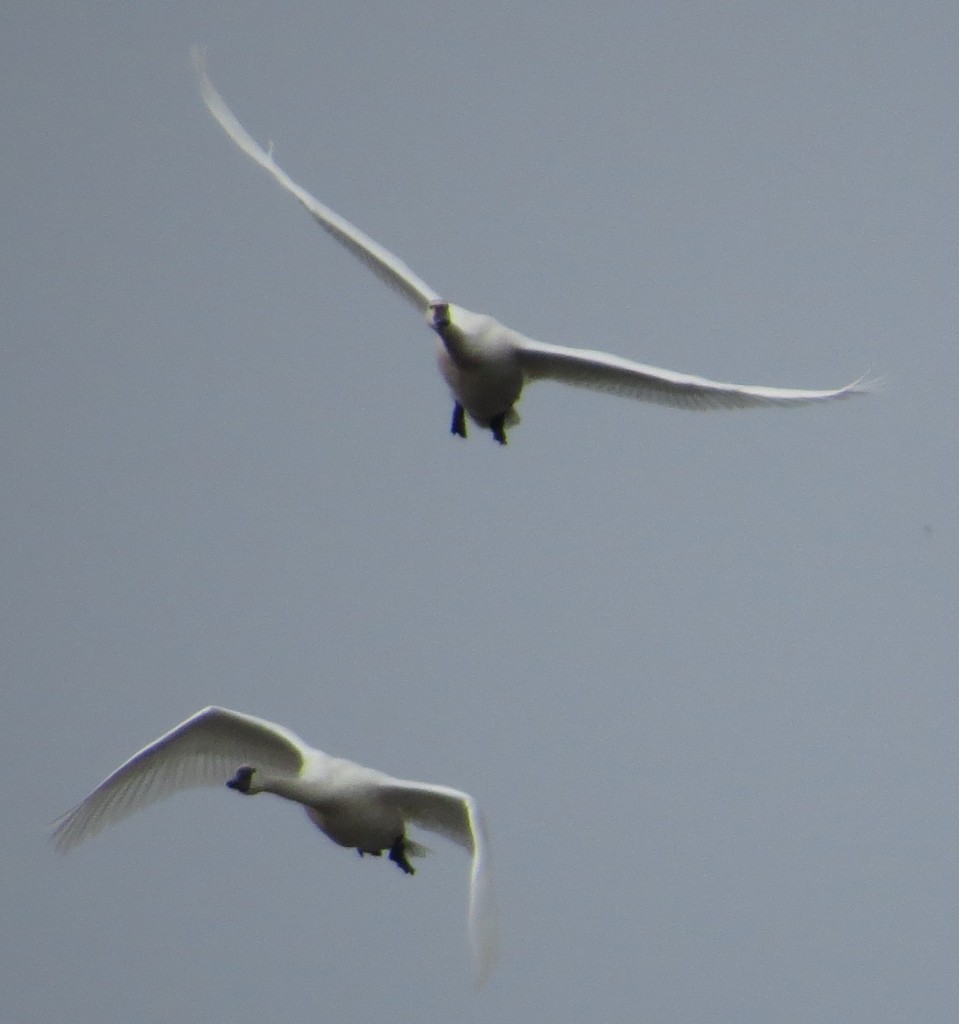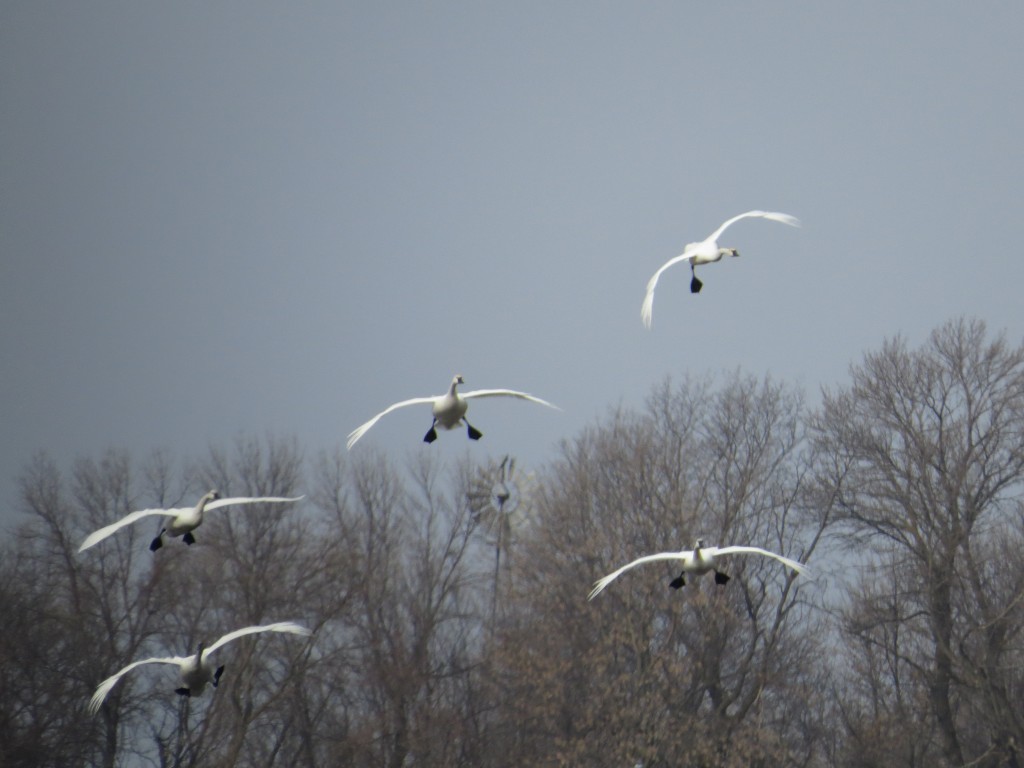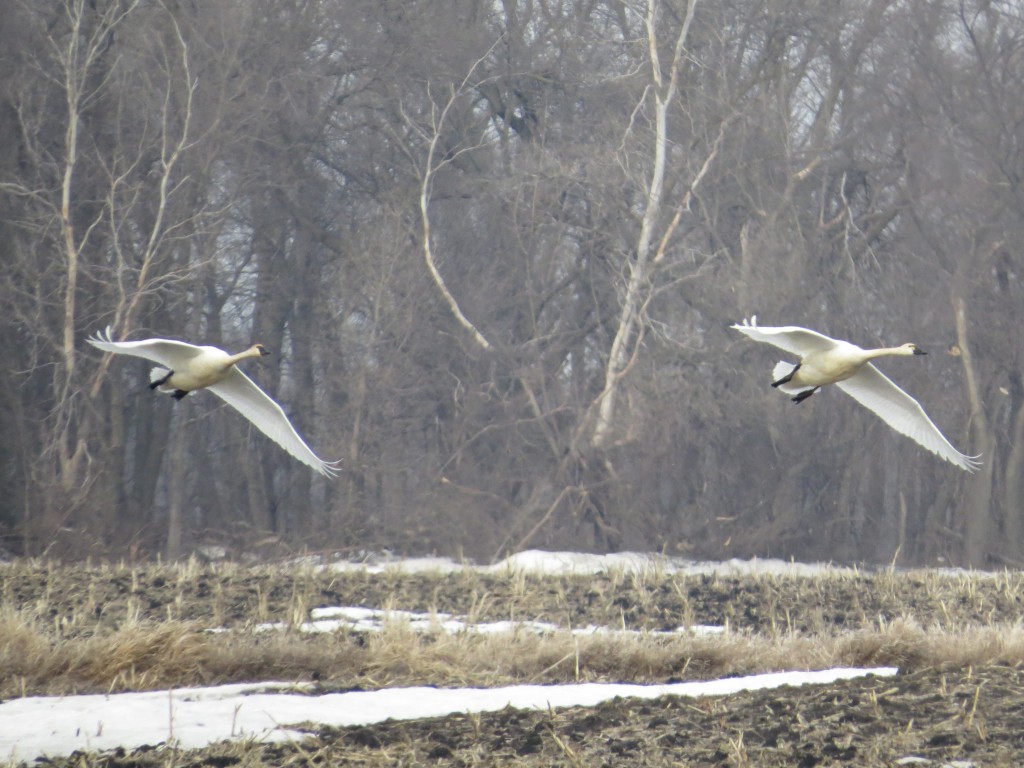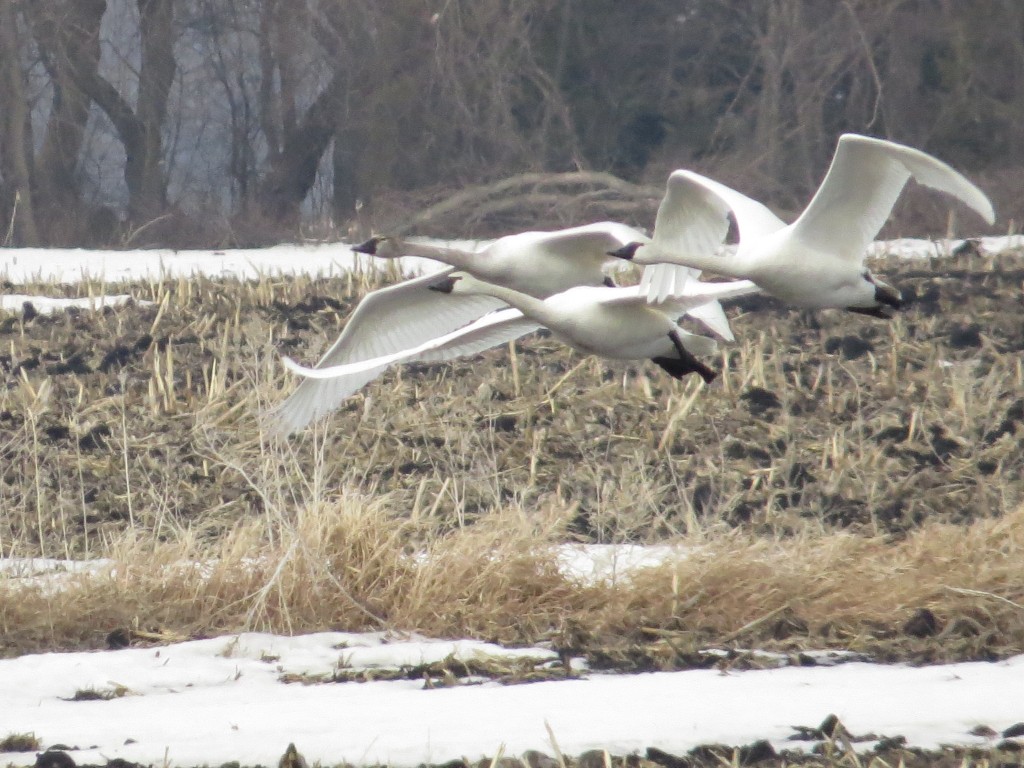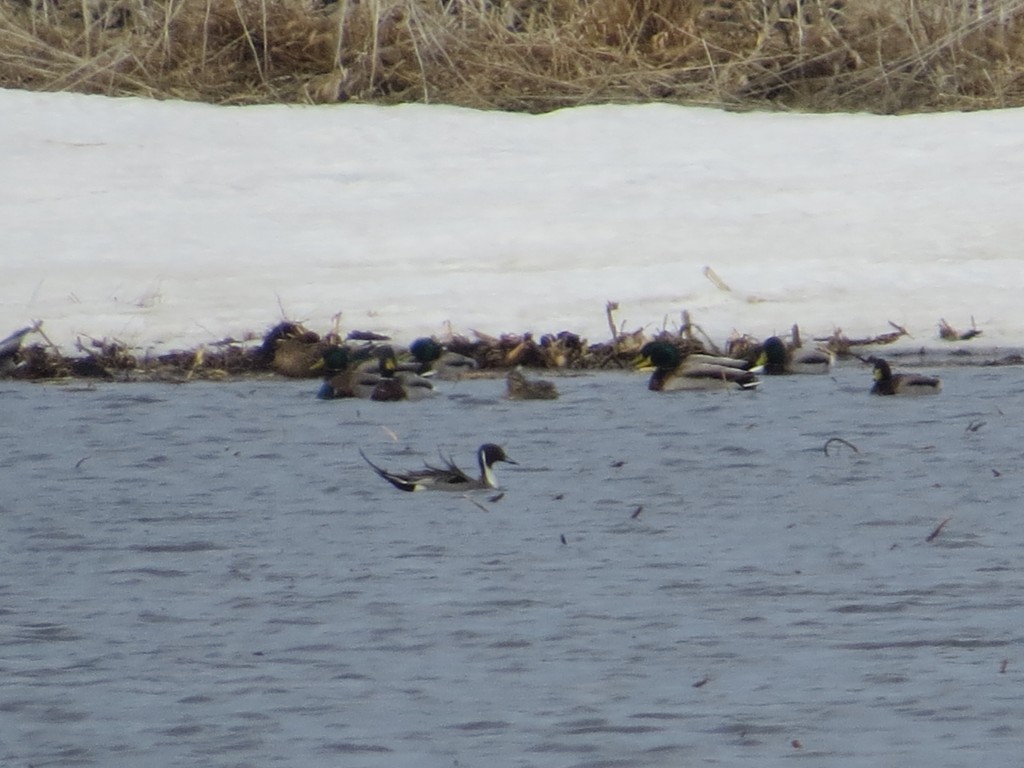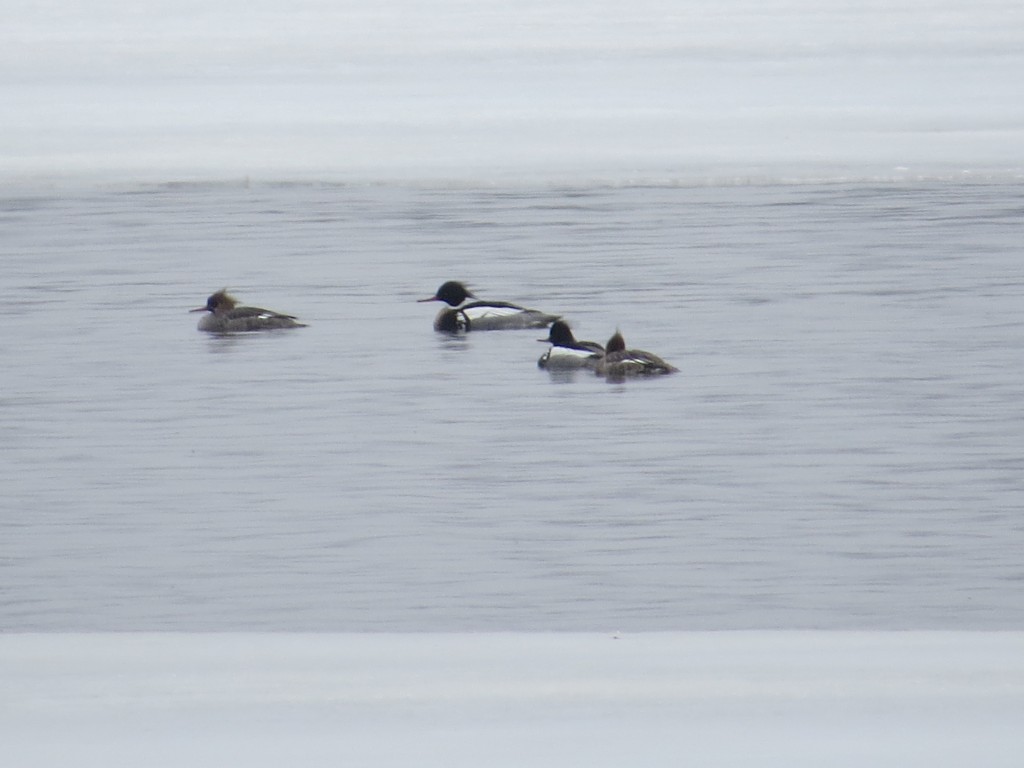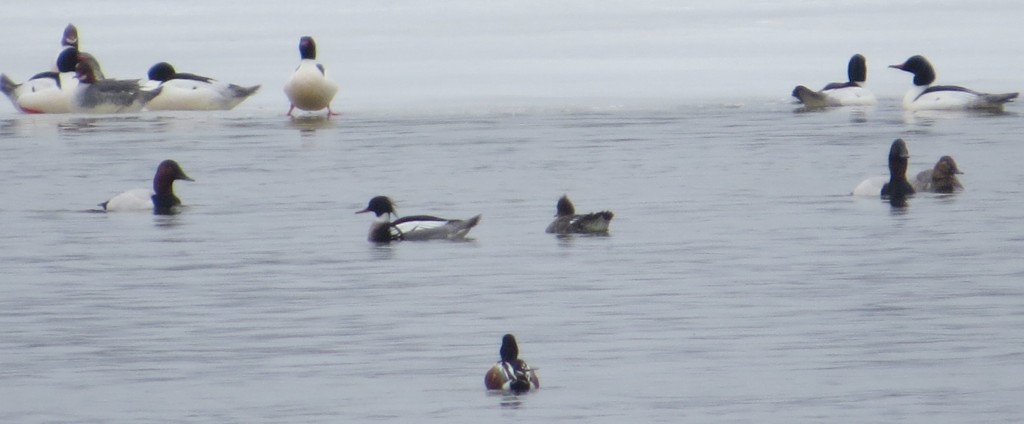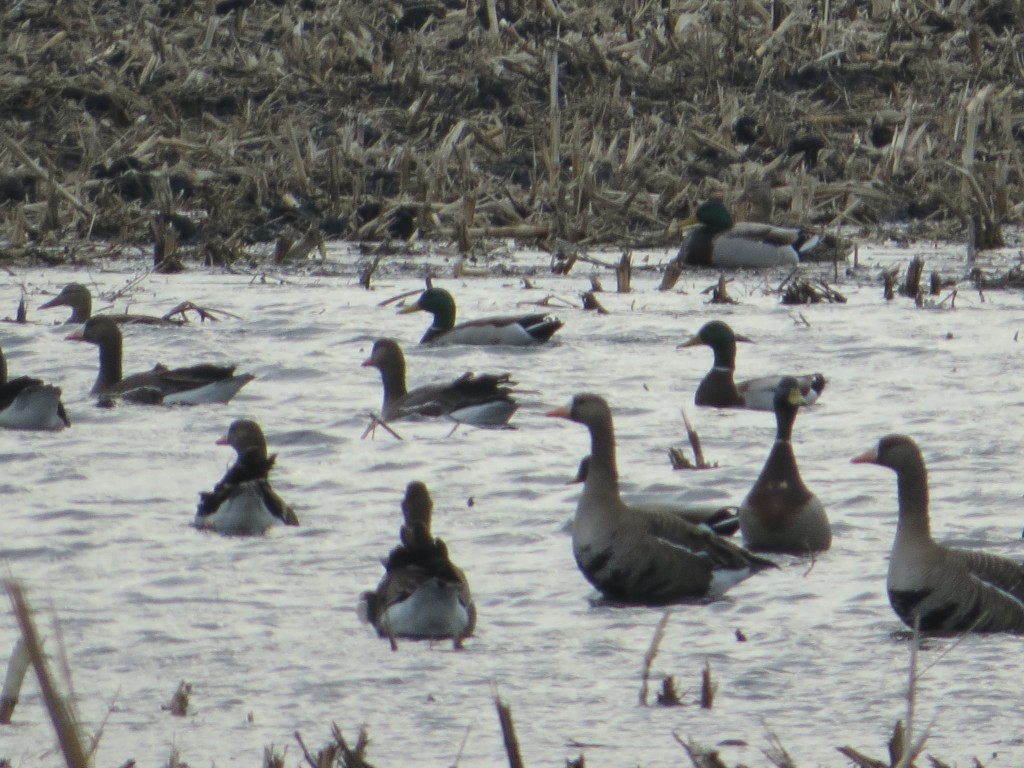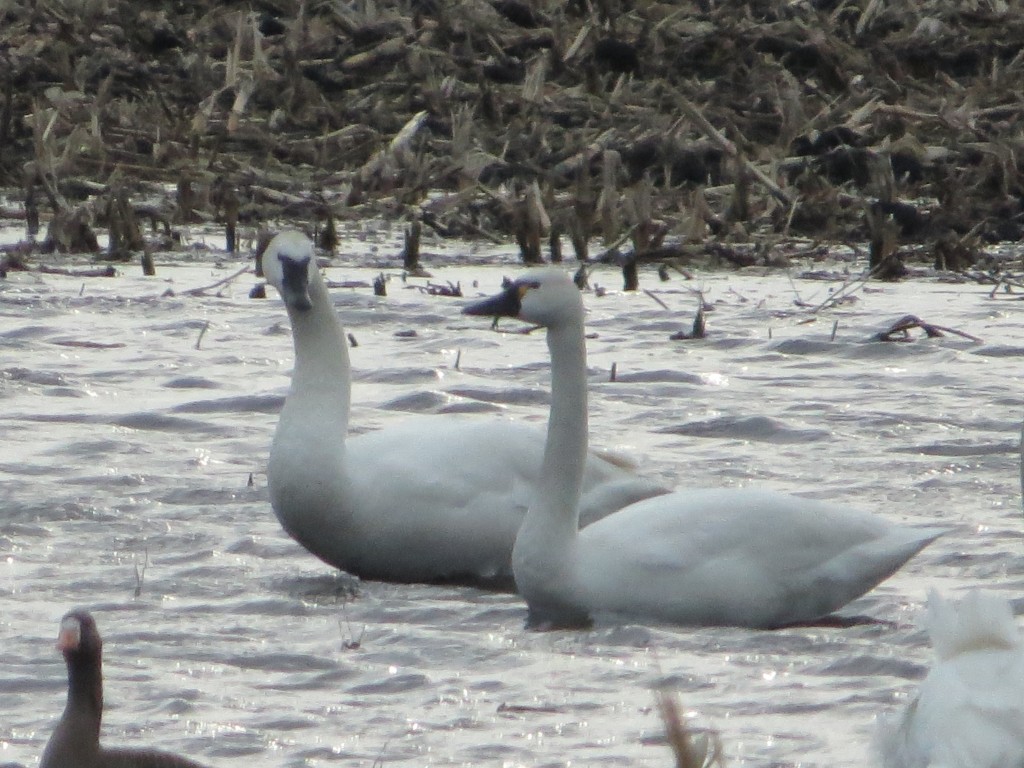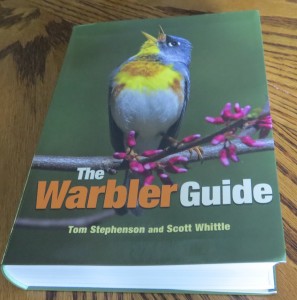 June 2012. I was driving a four-wheeler on my dad’s property when I heard a loud and beautiful bird song over the engine noise. I had to find out what that bird was. It didn’t take long to find the mystery bird singing its heart out on a low branch. I was awestruck with its beauty – a bright yellow cap and rusty sides on a white body. I raced back to the house and searched through my dad’s tattered 1960s Peterson field guide. The bird was easy to find – it was a Chestnut-sided Warbler. At that moment a birder was born, and I went on to discover that over four dozen species of these beautiful birds known as warblers can be found in the United States.
June 2012. I was driving a four-wheeler on my dad’s property when I heard a loud and beautiful bird song over the engine noise. I had to find out what that bird was. It didn’t take long to find the mystery bird singing its heart out on a low branch. I was awestruck with its beauty – a bright yellow cap and rusty sides on a white body. I raced back to the house and searched through my dad’s tattered 1960s Peterson field guide. The bird was easy to find – it was a Chestnut-sided Warbler. At that moment a birder was born, and I went on to discover that over four dozen species of these beautiful birds known as warblers can be found in the United States.
Warblers are by far my favorite group of birds to pursue, so I was thrilled to be able to do a review of The Warbler Guide – a new, extensive field guide by Tom Stephenson and Scott Whittle devoted just to this family of birds. It goes where no other field guide has gone before in terms of its coverage and revolutionary approaches for warbler identification. To give you a sense of just how comprehensive this book is, look at the photo below. The warbler section of the Kaufman Field Guide to Birds of North America is paper-clipped below. As you can see, The Warbler Guide is a significant expansion of information on these birds.
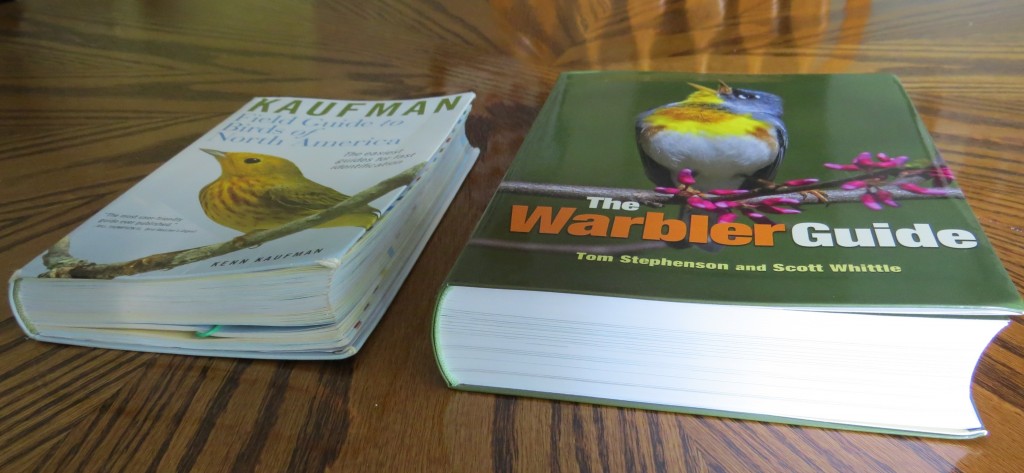
Don’t let the size of this book intimidate you. While you may not cart it along on a birding walk, I think you’ll find it to be an invaluable resource to supplement your favorite field guide(s). There is something in here for everyone, whether you are a complete newbie or an expert birder. As such, I will review this book as it relates to three levels of birders: Beginner, Intermediate, and Expert.
Beginning Birders
I use the term “beginning” to describe someone who can at least tell that a bird is a warbler when they see a small, hyper-active, colorful bird with a narrow, pointed beak. One of the most stunning features in this book that can help a beginner identify a warbler are the Quick Finders. These full page photographs lay out pictures of all the warbler species next to each other from many different vantage points including: side view, 45° view, and under view. One does not need to page through multiple pages back and forth to find the right bird because they can all be viewed at once.
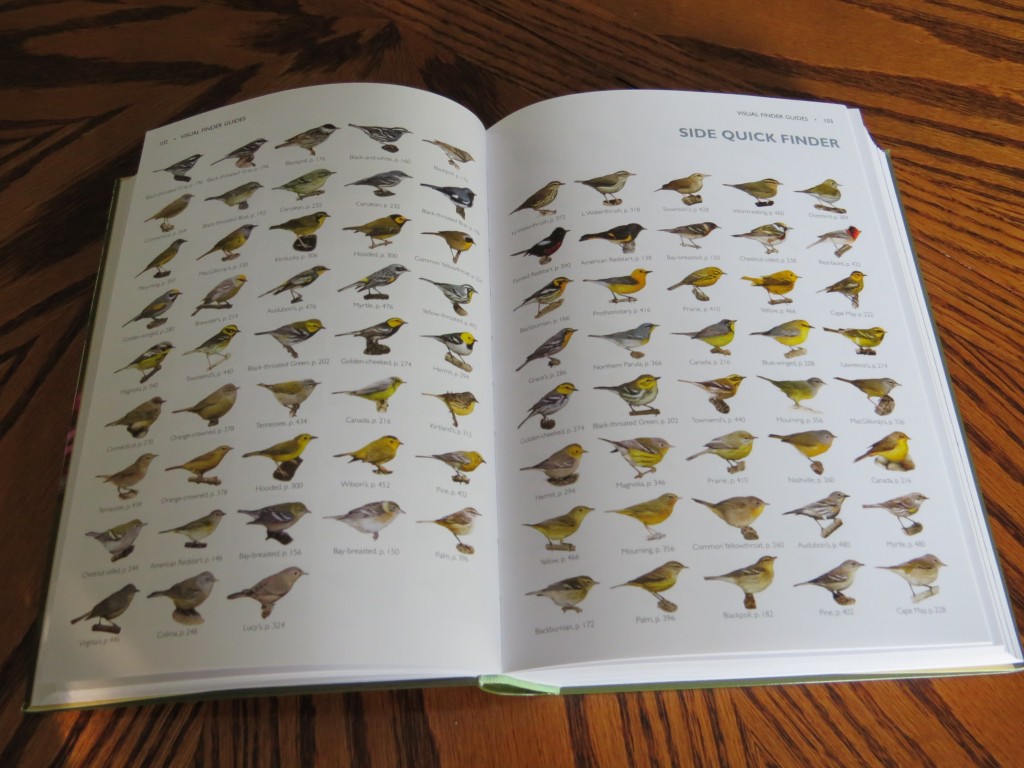
Side View Quick Finder – The Warbler Guide
I showed this to a seasoned birder, and his response was, “Huh, I’ve never seen them all laid out together like that.” This feature alone is priceless as it allows a beginning birder to quickly scan these images to find one that matches whatever bird was seen. Here is the Face Quick Finder – another quick tool for figuring out which warbler you’ve seen.
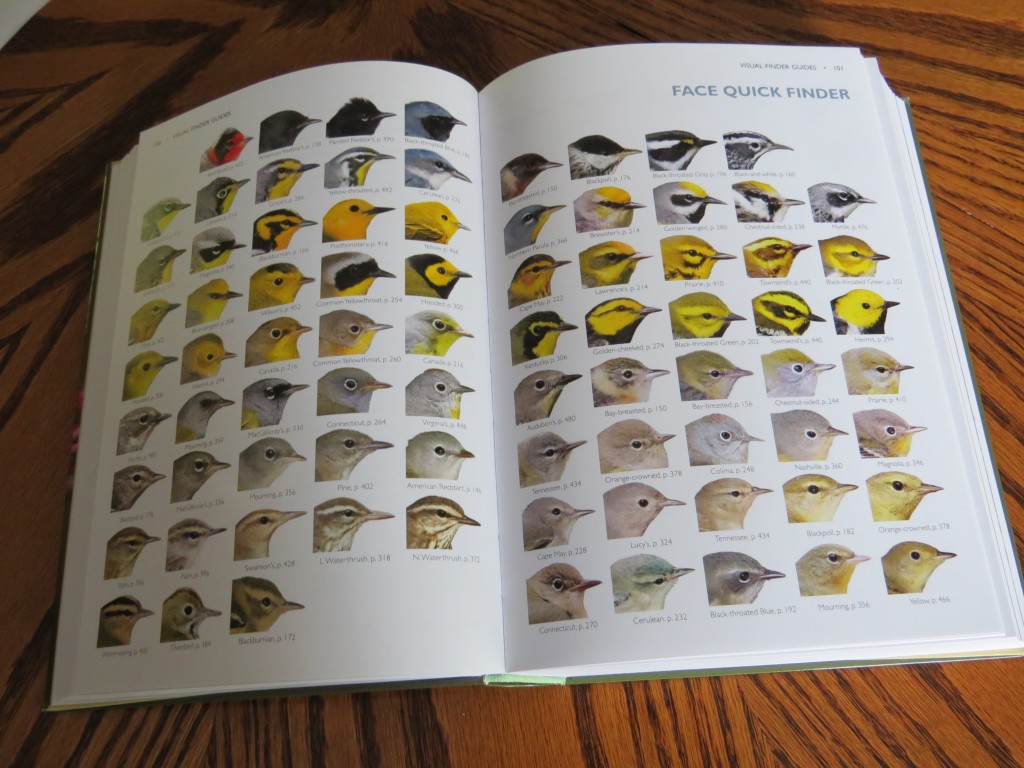
Face Quick Finder – The Warbler Guide
Princeton University Press has offered these Quick Finders as free downloadable files so that you can print them off and laminate them to take along when you go birding. I printed the side-view Quick Finder as a 16″ by 20″ poster for Evan’s bedroom wall. Here is the link for these files: The Warbler Guide Quick Finders.
In addition to the Quick Finders, each species has its own section in the book which are laid out in alphabetical order and not taxonomical order. This intuitive approach is inviting to the beginner. Additionally, each species section has a clean design that communicates key information visually. There are loads of photos from different angles along with descriptions of key behavior. The reading is light but still gives the essential information. Here is a sample.
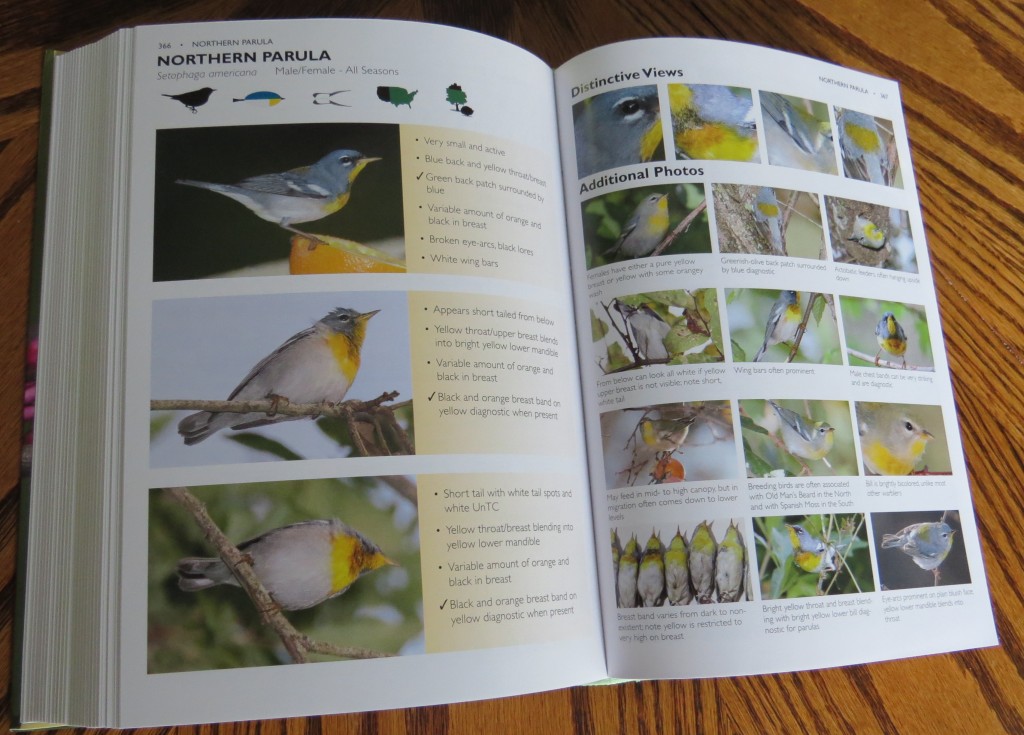
Northern Parula Section – The Warbler Guide
What is particularly helpful is the silhouette section. It is mostly self-explanatory, but one graphic in particular deserves a lot of praise. Note the green/black tree and bush. This indicates the vertical level of where this particular warbler is found. Until I went on a birding walk with a naturalist, I didn’t know that some species of warblers are found on the ground, others in the understory of the forest, and still others in the canopy. You need to know where to look to find a certain bird, and this graphic quickly shows you. You have to carefully read other field guides to get this same information.
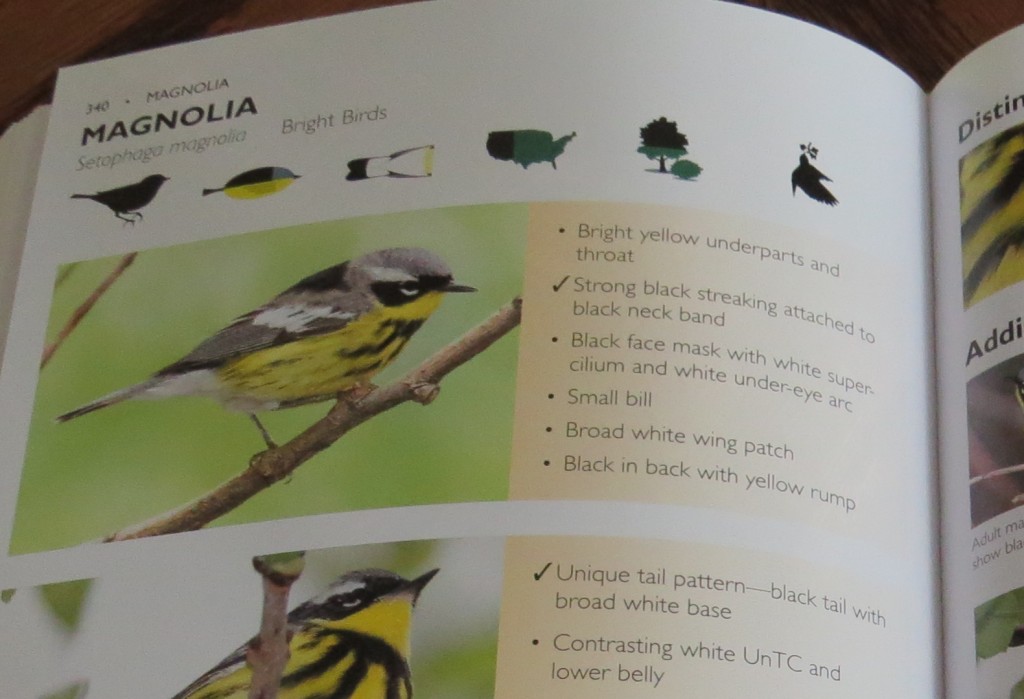 Another feature I like for beginners is the check mark that you notice above. If you see that particular feature on a mystery bird, you can safely use that alone to correctly identify the bird.
Another feature I like for beginners is the check mark that you notice above. If you see that particular feature on a mystery bird, you can safely use that alone to correctly identify the bird.
Intermediate Birders
I would classify myself in this group. I know all my male warblers by sight and some females. I know several songs and have many more to go. So here are some features that might be beneficial to other birders at this same level.
I really like the Quick Finders that focus on the underside of the bird. Most of the time you see warblers from underneath as they flit about in the trees through the leaves. Often you will just see a butt shot for a couple seconds at most. I have found that I take lots of photographs and identify birds later. Until The Warbler Guide came along, I had no idea that the underside of the tail is unique to each species of warbler. It is now possible to make a positive ID just with a view of the underside of the tail.
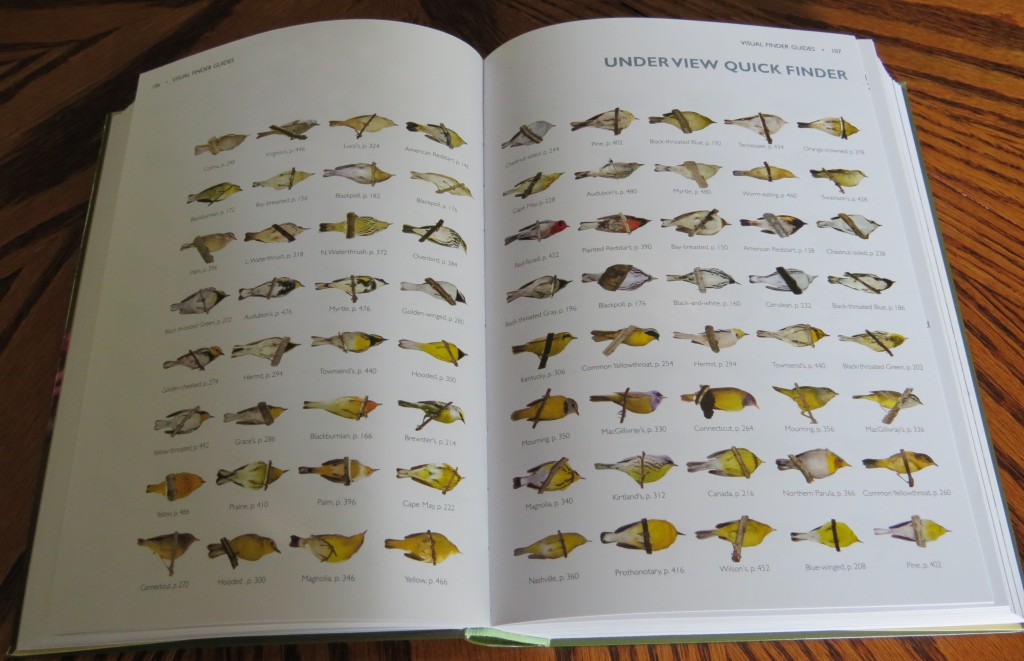
Under View Quick Finder – The Warbler Guide
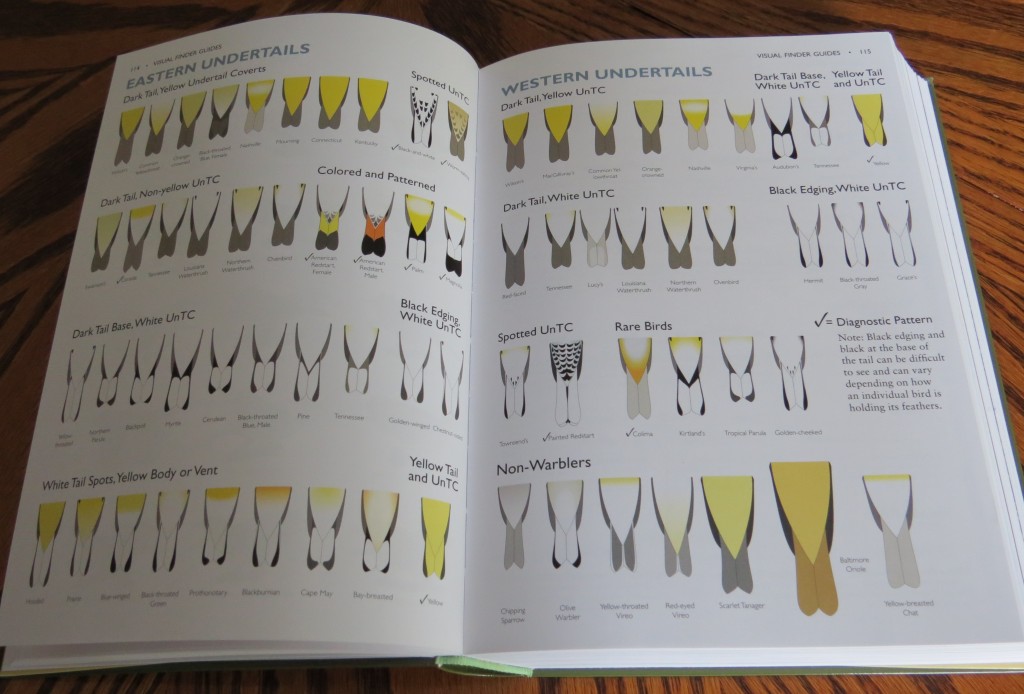
Undertail Visual Finders – The Warbler Guide
I put these visual finders to the test the other day when I was out birding. Fall migration is underway, and the warblers are on the move. In the picture below, I thought I might have seen a Northern Parula.
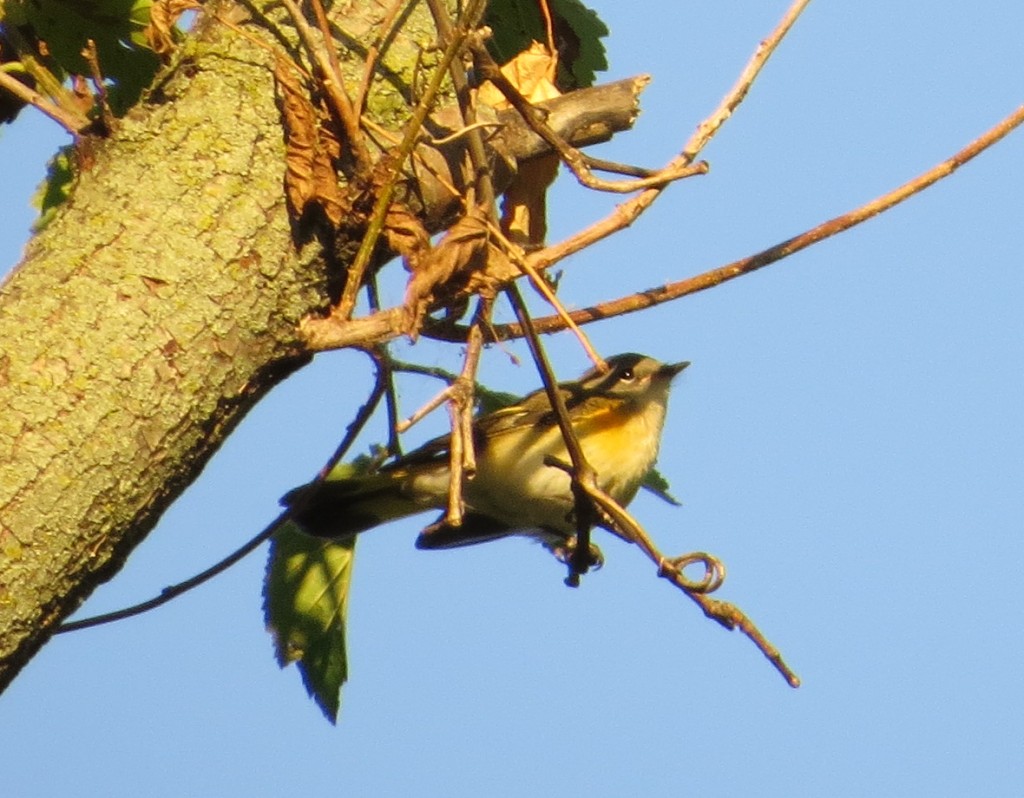 I compared the tail patterns, and my photo of the tail did not match that of the Northern Parula. However, I did find this tail pattern to be that of a female American Redstart. I went to the American Redstart section to find more photos of the females, and I saw that the details were lining up with those on my photo.
I compared the tail patterns, and my photo of the tail did not match that of the Northern Parula. However, I did find this tail pattern to be that of a female American Redstart. I went to the American Redstart section to find more photos of the females, and I saw that the details were lining up with those on my photo.
Here is a fleeting shot of some warbler I saw that same morning. I know there are many warblers that are yellow underneath, so I couldn’t safely identify it.
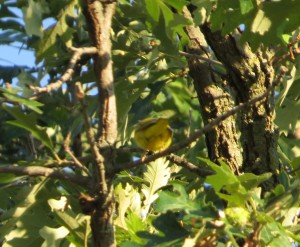 From the Quick Finders, there was only one bird that had a tail like this – the Yellow Warbler. In fact, the picture of the tail had the signature check mark which indicates this feature alone is enough to make a safe identification.
From the Quick Finders, there was only one bird that had a tail like this – the Yellow Warbler. In fact, the picture of the tail had the signature check mark which indicates this feature alone is enough to make a safe identification.
In this next photo, I thought for sure I had the Pine Warbler. But checking against the under tail pictures, I saw that a Pine Warbler’s tail is white underneath. So what was it? Fortunately, the under tail visual finders also show pictures of non-warblers. This helped me determine that this bird was the Yellow-throated Vireo.
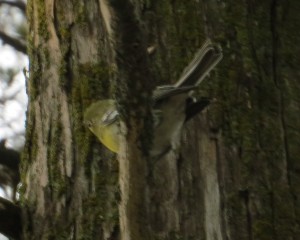
In addition to the Under View Quick Finders, I also loved the migration and range maps. You can see a separate map for spring migration routes and fall migration routes. Additionally, you are given a time reference chart to know about when during migration you will see these birds: early, middle, late.
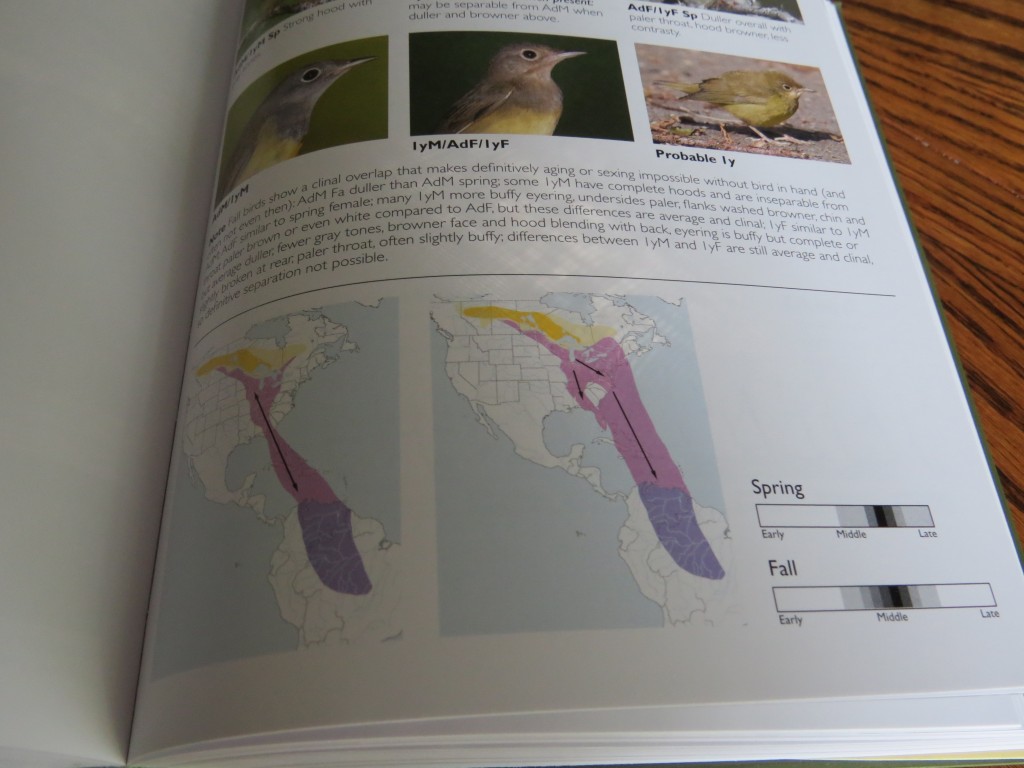
Expert Birders

Sonograms of American Redstart Songs
I am far from being a member of this class, but still I can recognize what they might appreciate in this book. One of the incredible features of this book is the emphasis placed on the auditory component of bird identification. The book introduces a system to differentiate songs, flight calls, and chip notes by their elements. This is enhanced visually by sonograms of every possible sound a warbler could make. To hear these sounds, you can buy The Warbler Guide Song and Call Companion and play any of the 1,000 audio files that are described in the book. Not being an auditory learner, this system is currently beyond my ability. I foresee using this for when I really want to learn a target warbler’s song well in order to find the bird. For example, the Hooded Warbler is my top-priority warbler for next summer, so I will be sure to learn all its vocalizations before I go out.
Something else that advanced birders will appreciate is that this guide helps to age and sex warblers and provides key photos in order to do that.
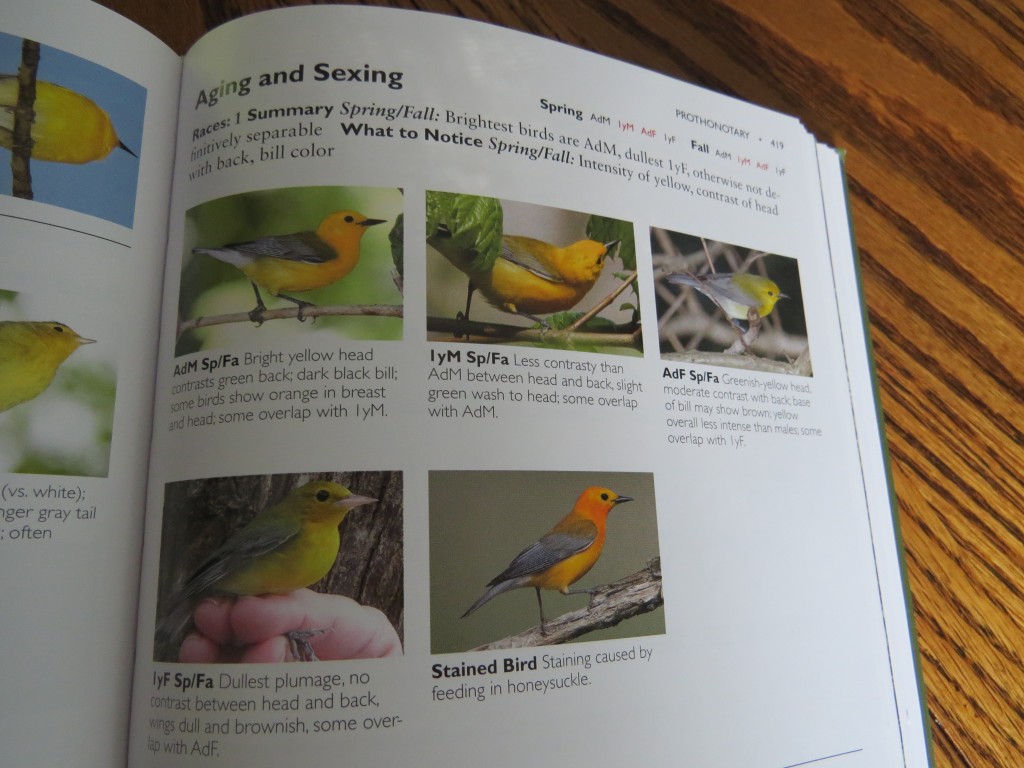
Summary
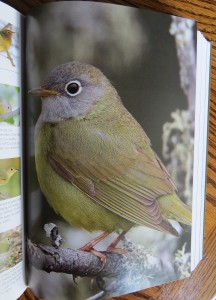
Connecticut Warbler – The Warbler Guide
This book is a must-have for a birder at any level. It is ground-breaking in its visual and auditory approaches to warbler identification. Though the book is big, it has a very simplistic, inviting feel on each of its pages. There is a nugget of knowledge for any birder, and everyone will appreciate the more than 1,000 incredible photos.
The only thing that could make this book even better would be photos and descriptions of typical habitat during the breeding season. Most birders in the U.S. only see these birds during migration, so it is understandable why this information is not included. But some of us like to go on the hunt for these birds during the summer months when they are on territory, and that information would be helpful. Another feature that could have enhanced the book would be a state-by-state cheat sheet of where one could find certain species with relative ease. For instance, Oberg Mountain in Minnesota has been a reliable place for decades to find the rare-regular Black-throated Blue Warbler. I’m afraid, though, that the inclusion of that information would make this book even bigger. Perhaps, though, there will someday be companion book containing that information that will be just as awesome as this one.
Disclaimer: This review expresses the honest opinions of Josh Wallestad at A Boy Who Cried Heron. The Warbler Guide was provided at no cost in exchange for this review. A Boy Who Cried Heron received no monetary compensation from Princeton University Press or the authors.
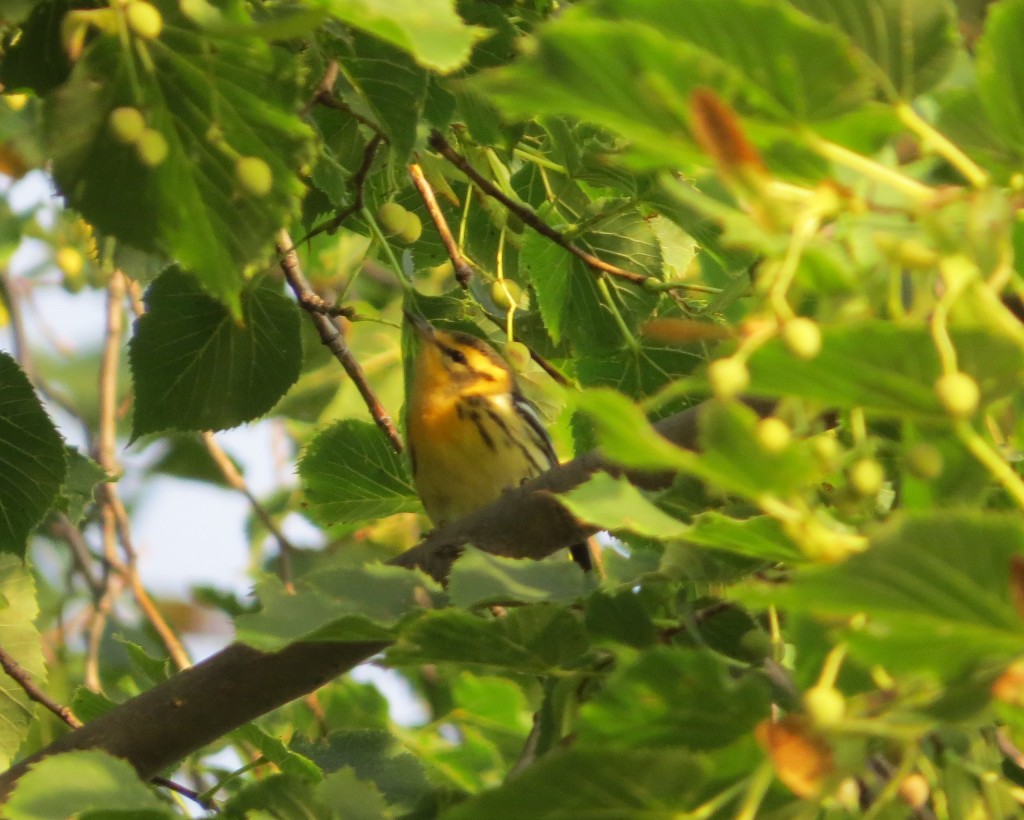
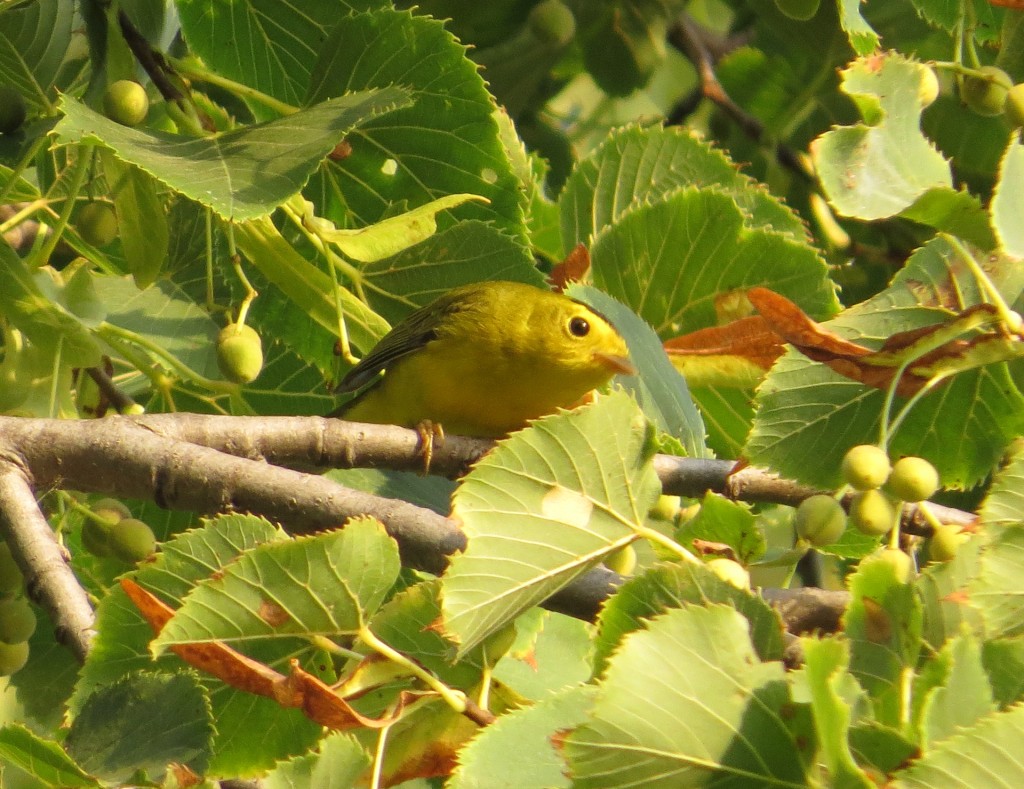 The warbler activity was intense for about 15 minutes, but then it was as if someone flipped a switch. We could hardly find anything. So we left our stationary birding spot to go walk through the park.
The warbler activity was intense for about 15 minutes, but then it was as if someone flipped a switch. We could hardly find anything. So we left our stationary birding spot to go walk through the park.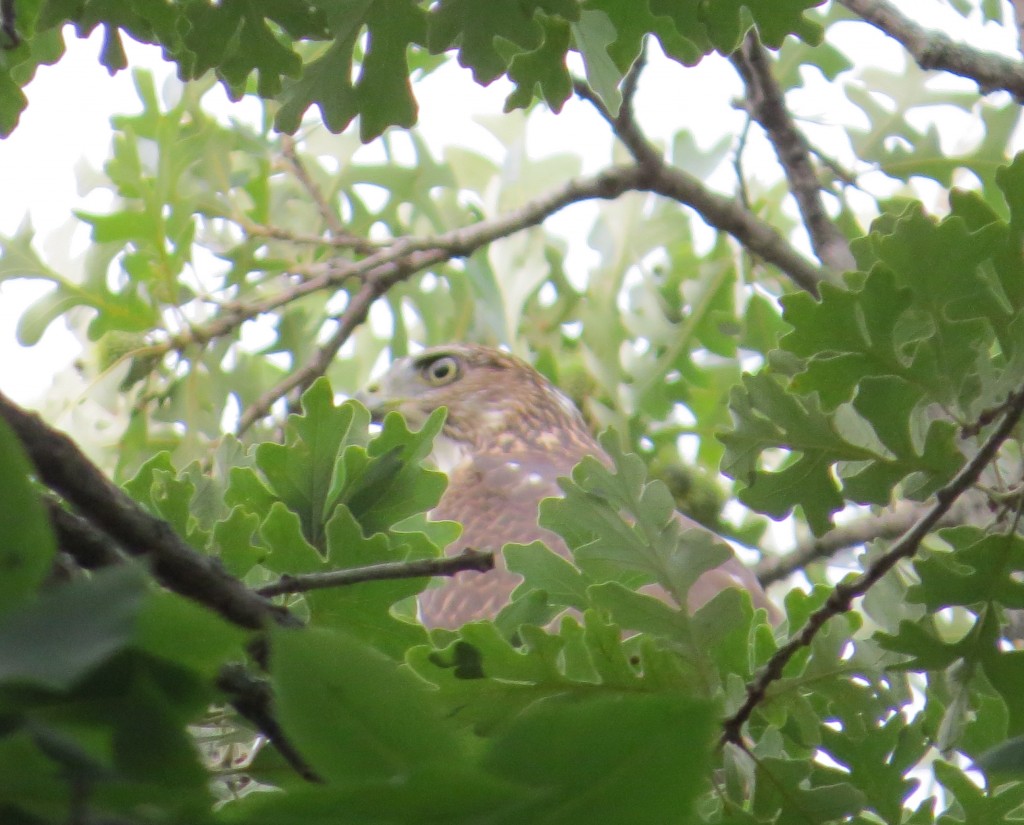 The crows kept after this hawk, chasing him out of this tree and through the park. We weren’t far behind as we were now running along trying to get another glimpse of the action through the canopy of the trees.
The crows kept after this hawk, chasing him out of this tree and through the park. We weren’t far behind as we were now running along trying to get another glimpse of the action through the canopy of the trees.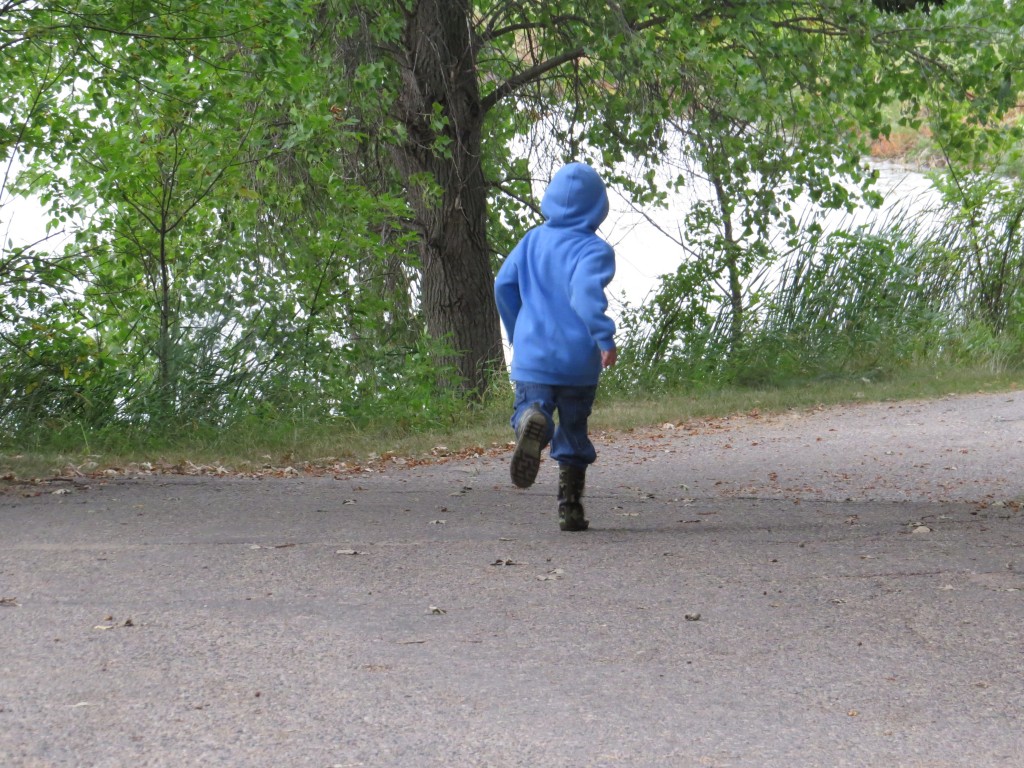 As we followed this circus, Evan claimed to have seen a second hawk being chased by the crows. We eventually caught up to the flock of crows at the end of a long skinny peninsula on Foot Lake. We watched from a distance and were able to see that a hawk was still with the crows. Shortly afterward, the crows chased the hawk back toward us, and I was able to get this flight shot.
As we followed this circus, Evan claimed to have seen a second hawk being chased by the crows. We eventually caught up to the flock of crows at the end of a long skinny peninsula on Foot Lake. We watched from a distance and were able to see that a hawk was still with the crows. Shortly afterward, the crows chased the hawk back toward us, and I was able to get this flight shot.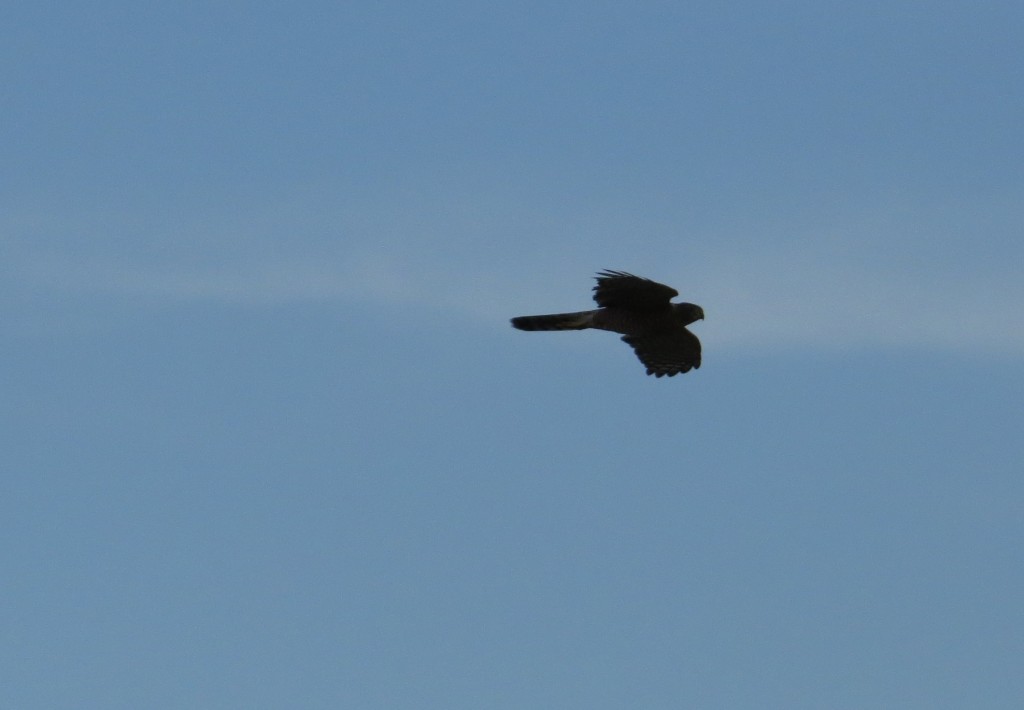 Though the light in the picture was bad, I saw that this hawk belonged to the Accipiter family – hawks with long tails. The Broad-winged hawk is a Buteo – a hawk with a wide fan tail. Evan was right – there were two hawks! Now we were dealing with either a Sharp-shinned or Cooper’s Hawk. We eventually lost track of this hawk without making a positive ID.
Though the light in the picture was bad, I saw that this hawk belonged to the Accipiter family – hawks with long tails. The Broad-winged hawk is a Buteo – a hawk with a wide fan tail. Evan was right – there were two hawks! Now we were dealing with either a Sharp-shinned or Cooper’s Hawk. We eventually lost track of this hawk without making a positive ID.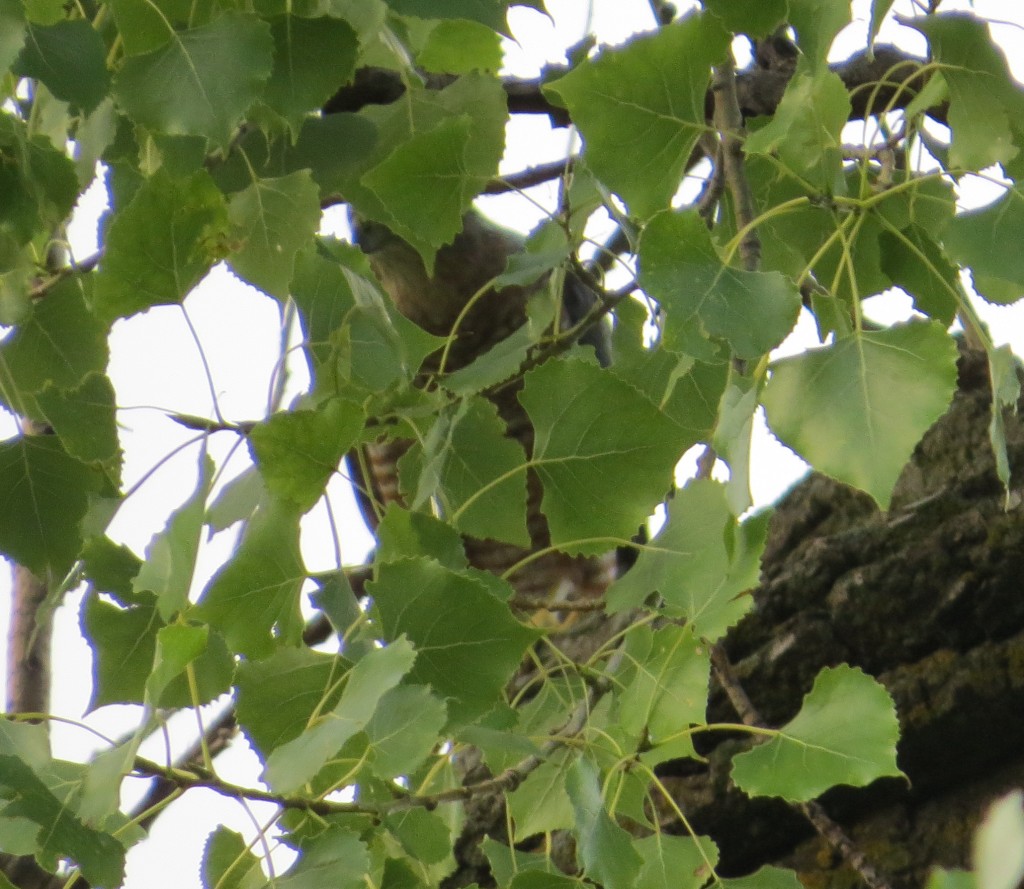 The crows helped me out by continuing to pester the bird until it was in a good view. And we saw that it was a Cooper’s Hawk.
The crows helped me out by continuing to pester the bird until it was in a good view. And we saw that it was a Cooper’s Hawk.